Dressed like gentlemen with ties, hats, and looking innocently towards the cameras, these men and women seem to pose for a portrait. But behind tidy appearances are guilty personalities that hide some of the sinister crimes. These are mugshots of Australian convicts from the 1920s, who had committed murders, robberies, burglaries, and other crimes.
Australia’s Justice & Police Museum has released pictures of murderers, bigamists, bootleggers, prostitutes, and several other criminals from the early 20th century. These photographs were mostly taken in the cells at the Central Police Station, Sydney. The images themselves are of excellent quality, beautifully composed and in many cases, quite artistic.
#1 Thomas Craig, Raymond Neil (aka “Gaffney the Gunman”), William Thompson and F.W. Wilson. 1928.
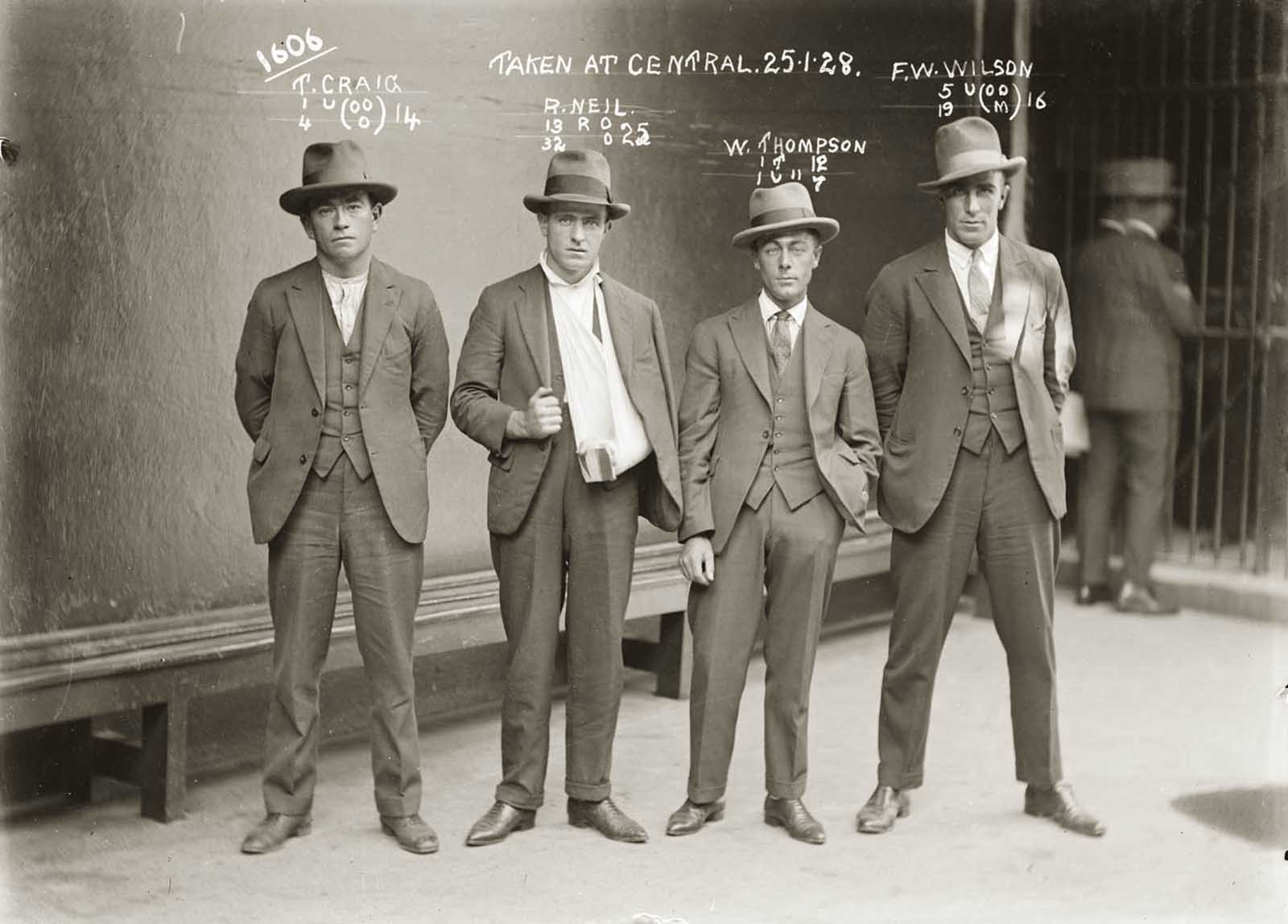
This photograph was apparently taken in the aftermath of a raid led by Chief Bill Mackay – later to be Commissioner of Police – on a house at 74 Riley Street, ‘lower Darlinghurst’. Numerous charges were heard against the 15 men and women arrested. It was a house frequented by ‘reputed thieves.
#2 William Stanley Moore. 1926.
#3 Albert Stewart Warnkin and Adolf Gustave Beutler.1920.
#4 Eugenia Falleni, alias Harry Crawford. 1920.
#5 Joseph Messenger. 1922.
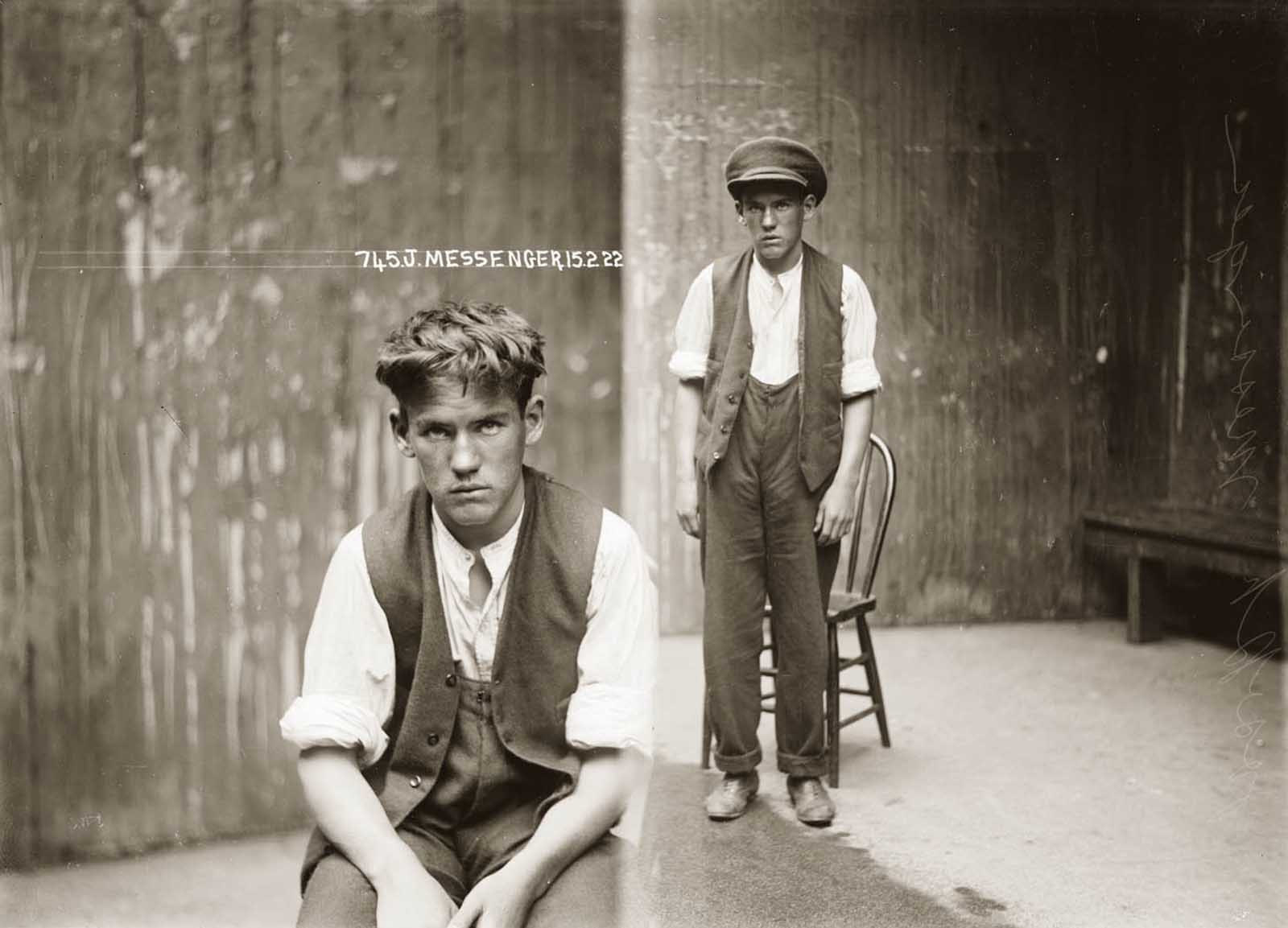
Joseph Messenger and Valerie Lowe were arrested in 1921 for breaking into an army warehouse and stealing boots and overcoats to the value of 29 pounds 3 shillings. The following year, when this photograph was taken, they were charged with breaking and entering a dwelling. Those charges were eventually dropped but they were arrested again later that year for stealing a saddle and bridle from Rosebery Racecourse. As an adult messenger was active in inner-Sydney underworld through the 1920s, and he appears in the NSW Criminal Register (16 July 1930 entry No. 171) as a seasoned criminal and gang affiliate. The description of his modus operandi includes, ‘Violently [resists] arrest…frequents wine saloons, billiard rooms, and racecourses … consorts with prostitutes.’ This photograph shows Messenger at age 18.
#6 Guiseppe Fiori, alias Permontto. 1924.
#7 Walter Keogh. 1922.
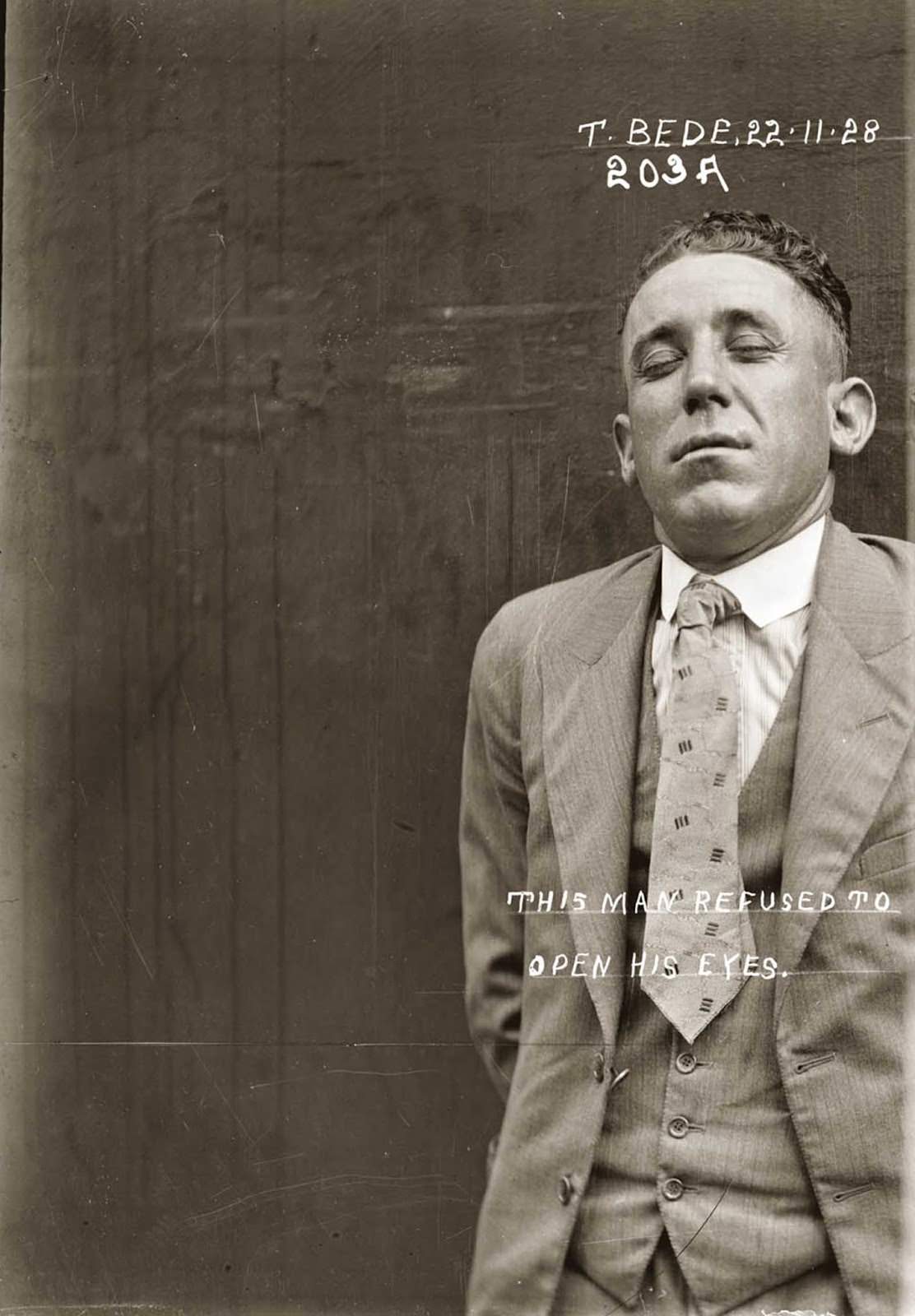
Walter Keogh appears in the Photo Supplement to the 1923 NSW Police Gazette (7 February Group 1 p. 4) identified as a pickpocket, and later in 1928 (26 December, Group 4 p. 15) as a ‘suspected person and bogus land salesman’. Keogh was also profiled in exposes in the newspaper truth in 1928, as a ‘go-getter’, ie a con man who sells suburban building blocks at grossly inflated prices, by falsely leading the buyers to believe the lots may be promptly resold for a huge profit.
#8 De Gracy and Edward Dalton, 1920.
#9 Frank Murray alias Harry Williams. 1929.
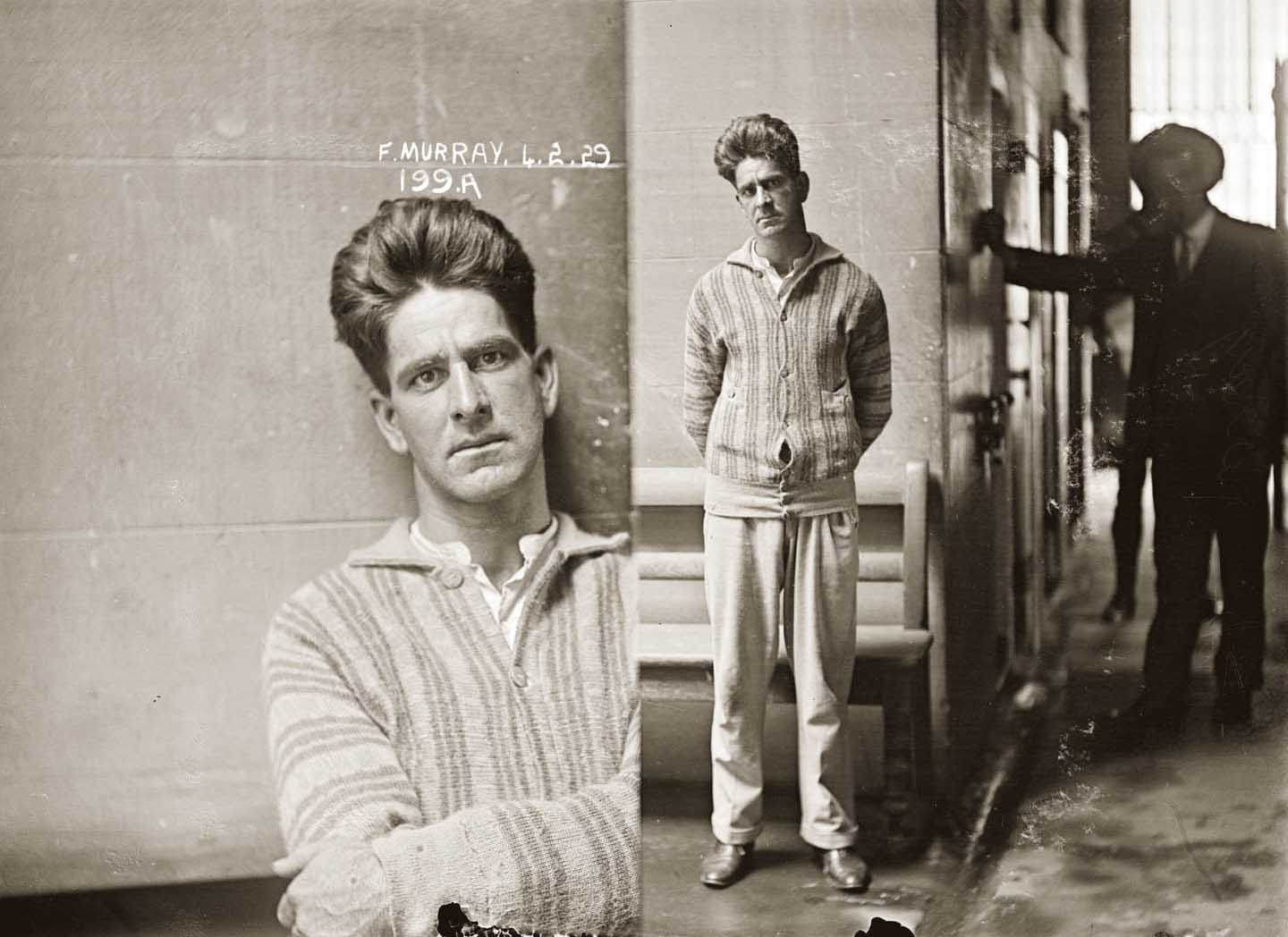
Harry Williams was sentenced to 12 months’ hard labor on March 1929 for breaking, entering and stealing. Murray/Williams’ entry in the NSW Criminal Register, April 30, 1930, describes him as a housebreaker and thief, whose MO includes ‘[breaking] lead lighted doors or windows or [forcing] the fanlights of dwelling houses during the absence of tenants’. He ‘disposes of stolen property to patrons of hotel bars or to persons in the street … professing] to be a second-hand dealer’. Although he ‘consorts with prostitutes’ and ‘frequents hotels and wine bars in the vicinity of the Haymarket’, he is described as being of ‘quiet disposition’.
#10 Gilbert Burleigh and Joseph Delaney. 1920.
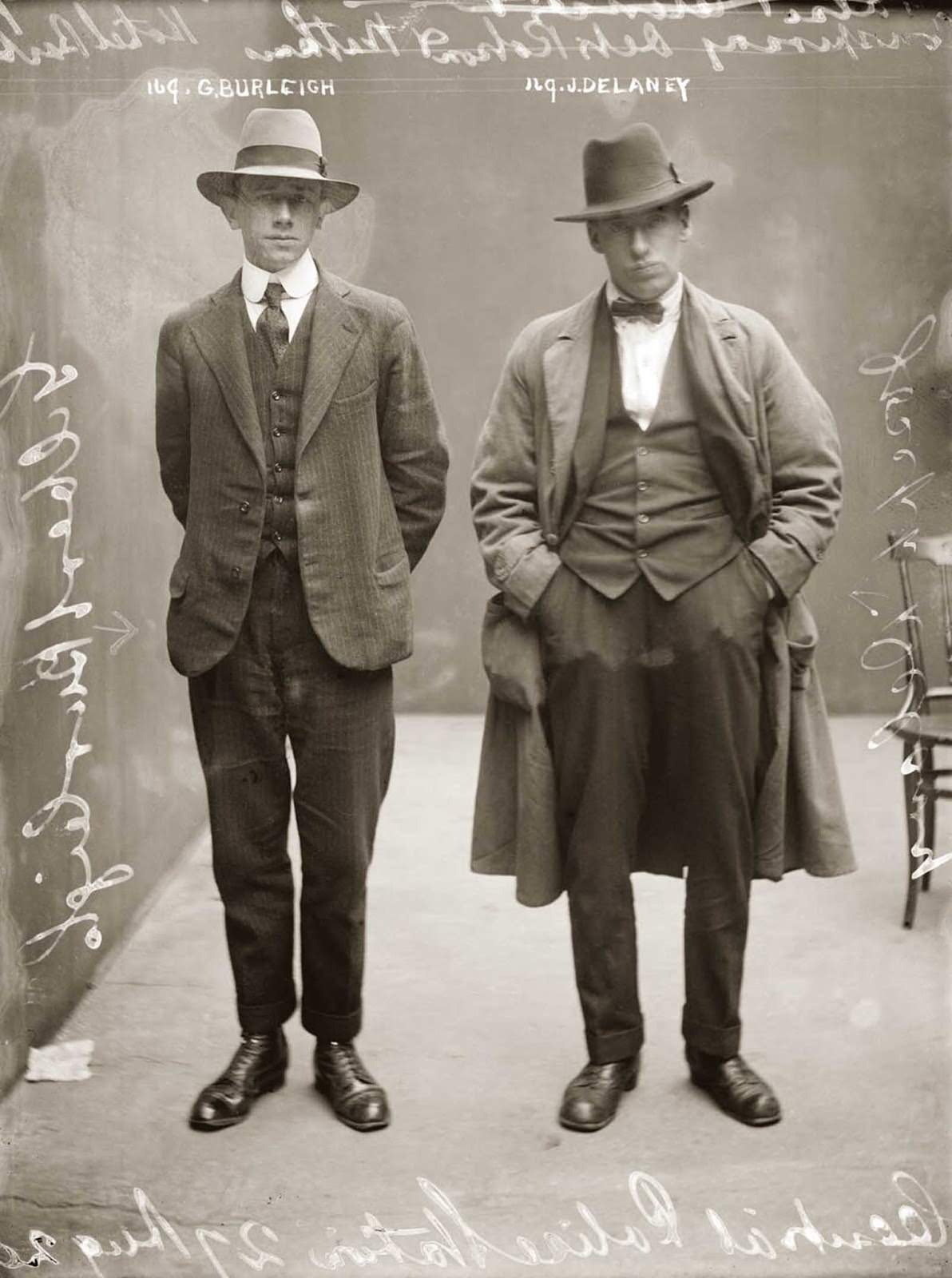
Gilbert Burleigh on the left is identified as a ‘hotel barber’, and Delaney‘s picture is labeled ‘false pretenses & conspiracy’. A companion photograph makes it clear that in fact Delaney was the hotel barber – meaning one who books into a hotel, boarding house or residential and robs (or ‘snips’) fellow patrons, usually in the dead of night. In this instance Delaney was charged with stealing a cigarette case, a hairbrush, a clock and a quantity of clothing from a dwelling house. A month later he was further charged ‘being about to abscond from bail’. He is described as ‘a fireman and a returned soldier’.
#11 William Cahill. 1923.
#12 Sydney Skukerman or Skukarman. 1924.
#13 “Silent Tom” Richards and T. Ross. 1920.
#14 George Whitehall. 1922.
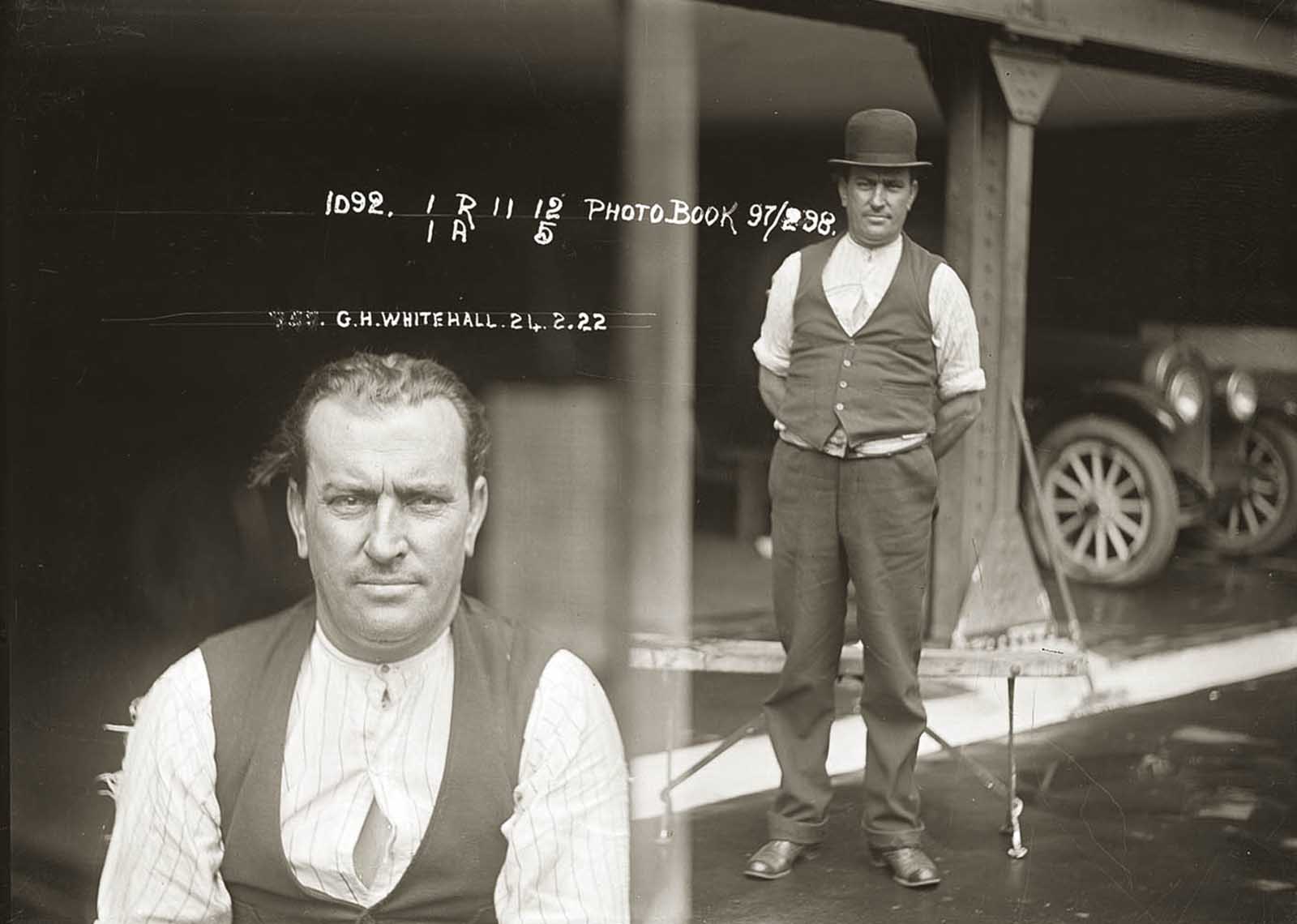
George Whitehall, carpenters, handed himself into Newtown police after hacking to death his common-law wife, Ida Parker on Tuesday afternoon 21 February 1922, at their home in Pleasant Avenue, Erskineville. This photo was apparently taken the following morning at Newtown Police Station.
#15 John Walter Ford, Oswald Clive Nash. 1921.
#16 Ernest Joseph Coffey. 1922.
#17 Thomas Bede. 1928.
#18 Masterman Thomas Scoringe. 1922.
#19 Patrick Riley. 1924.
#20 Alfred John (or Francis) West. 1922.
#21 Walter Smith. 1924.
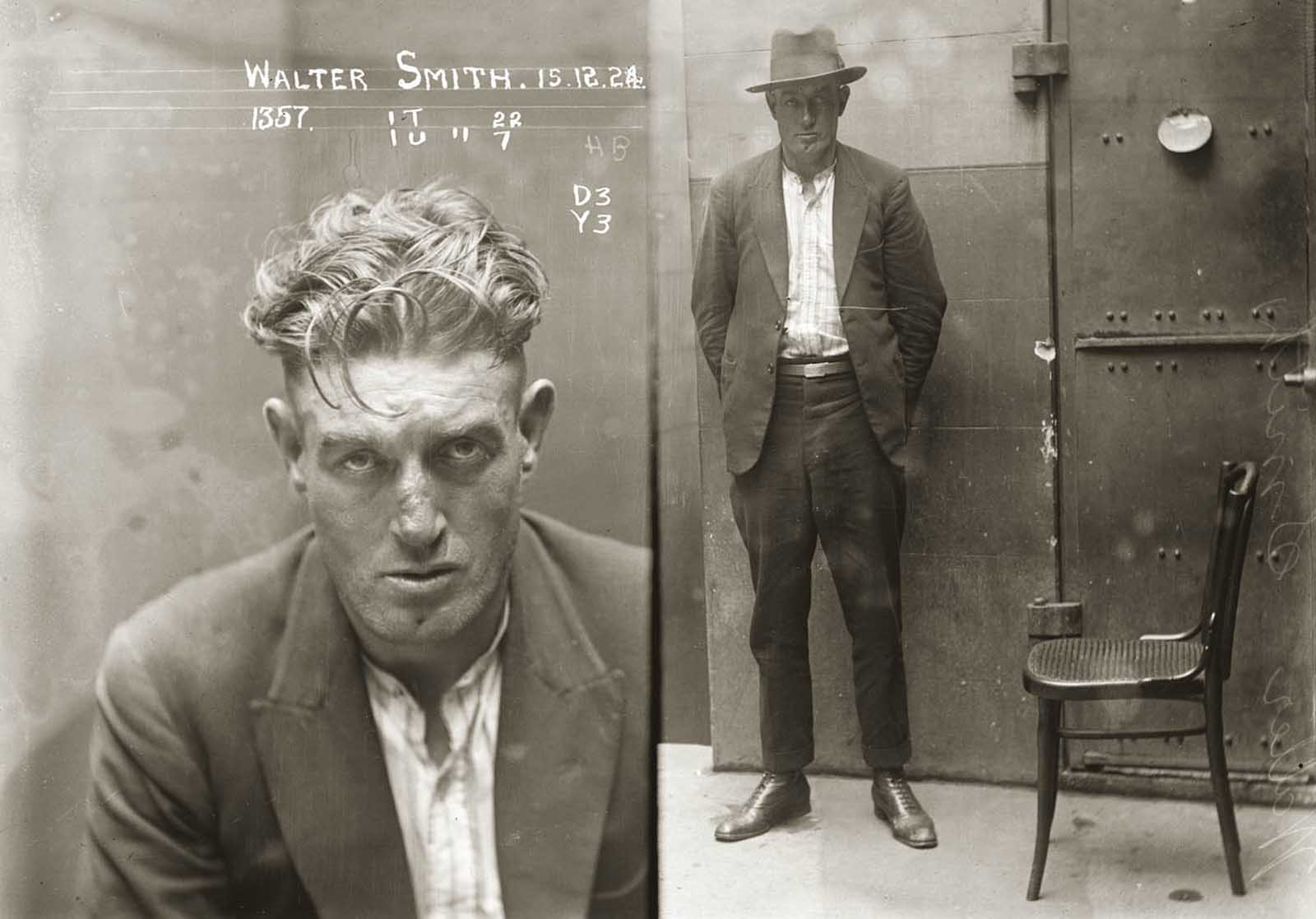
Walter Smith is listed in the NSW Police Gazette, 24 December 1924, as ‘charged with breaking and entering the dwelling house of Edward Mulligan and stealing blinds with a value 20 pounds (part recovered)’, and with ‘stealing clothing, a value of 26 pounds (recovered) in the dwelling house of Ernest Leslie Mortimer.’ Sentenced to 6 months’ hard labor.
#22 Sidney “Pretty Sid” Grant. 1921.
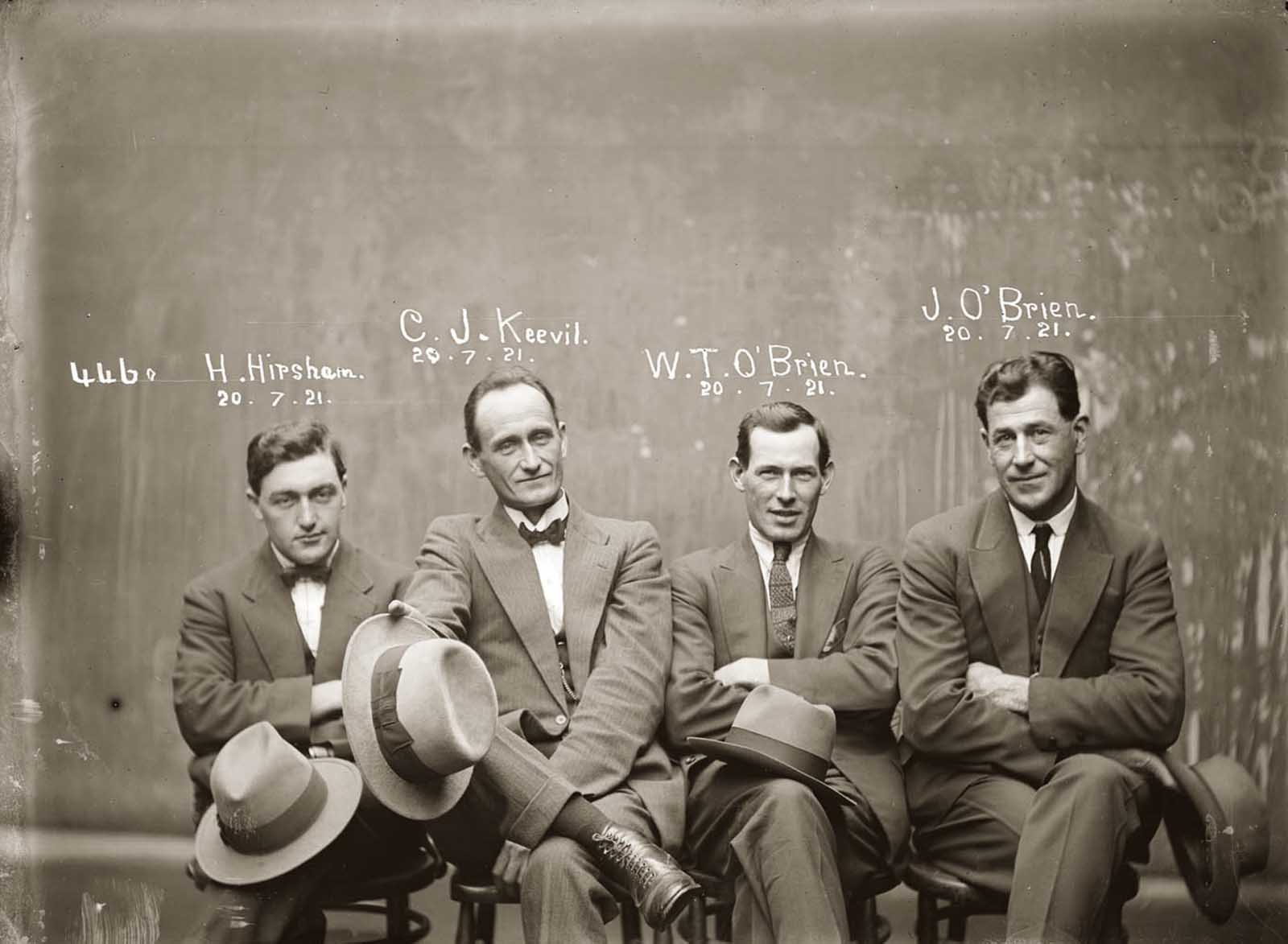
A picture of Sidney Grant (alias, ‘Pretty Sid’) appears in the ‘Criminal Photographs’ section of the New South Wales Police Gazette, 2 May 1923 captioned ‘Confidence man (notes for gold)’. In his landmark sociological work, The Big Con (first published in 1940) David Maurer describes a con trick known as “the hot seat”, then being practiced in Europe by “such masters of their profession as Pretty Sid, Snowy T-, Kangaroo John, Melbourne Murray, Devil’s Island Eddie, Slab B[rennan]…” It was not unusual then for the most accomplished Australian con artists to seek fresh fields in Britain, Europe (especially France) and North America, where their skills were held in high regard by fellow professionals.
#23 Hampton Hirscham, Cornelius Joseph Keevil, William Thomas O’Brien & James O’Brien. 1921.
#24 Sidney Kelly. 1924.
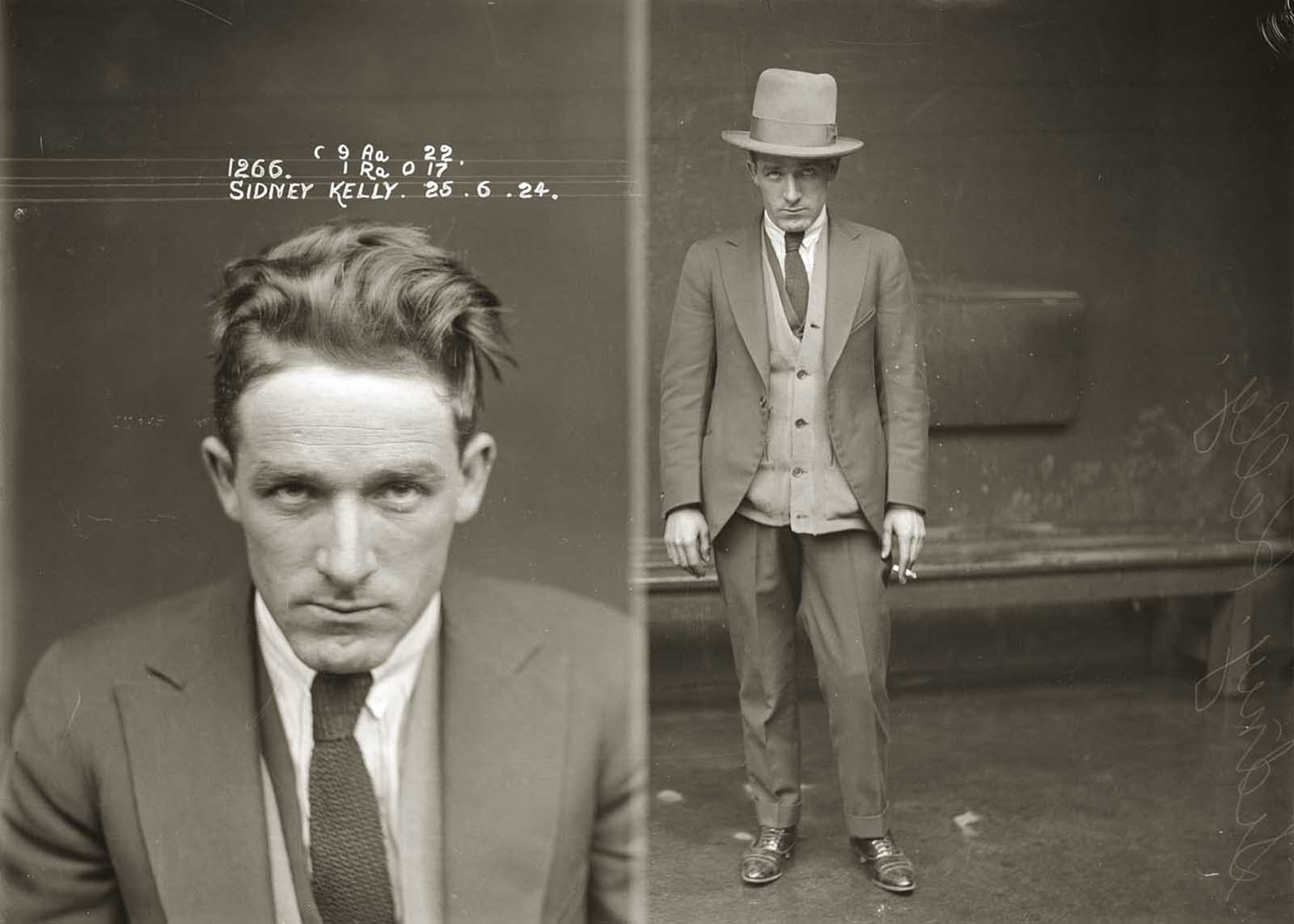
Details surrounding this particular photograph are unknown, but Sidney Kelly was arrested many times and much written about in newspapers during the 1920s, 30s and 40s. He was charged with numerous offenses including shooting, and assault, and in the 1940s was a pioneer of illegal baccarat gaming in Sydney. This image appears in the Photo Supplement to the NSW Police Gazette, 26 July 1926, p. 6 captioned, “Illicit drug trader. Drives his own motor car, and dresses well. Associates with criminals and prostitutes.”
#25 Harold Price. 1923.
#26 Frederick Edward Davies. 1921.
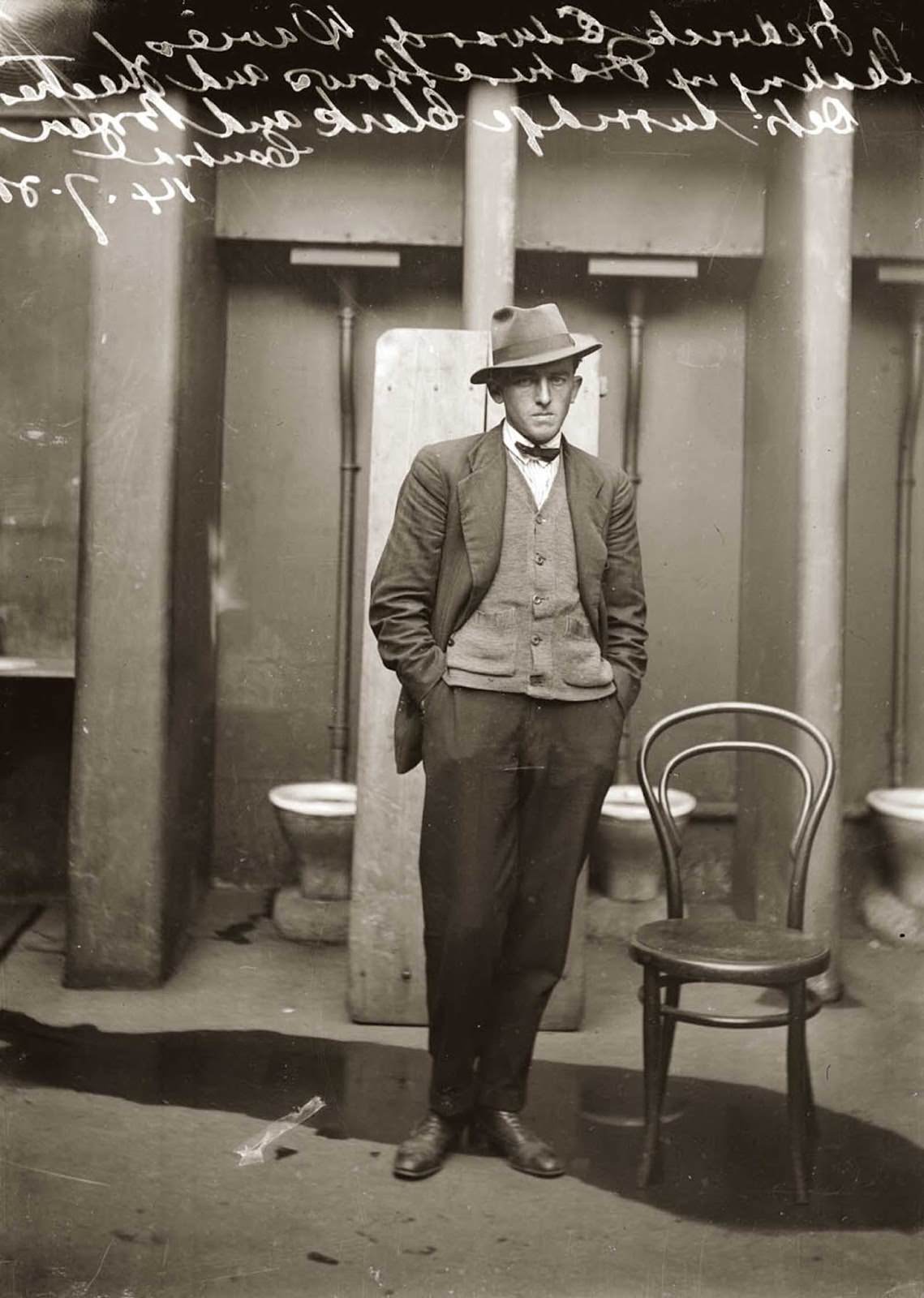
The handwritten inscription on this unnumbered Special Photograph reads, ‘Frederick Edward Davies stealing in picture shows and theaters Dets Surridge Clark and Breen Central 14-7-21’. Police held sneak thieves in particular low regard, which may account for the decision to photograph Davies in front of the police station’s toilet stalls.
#27 Herbert Ellis. 1920.
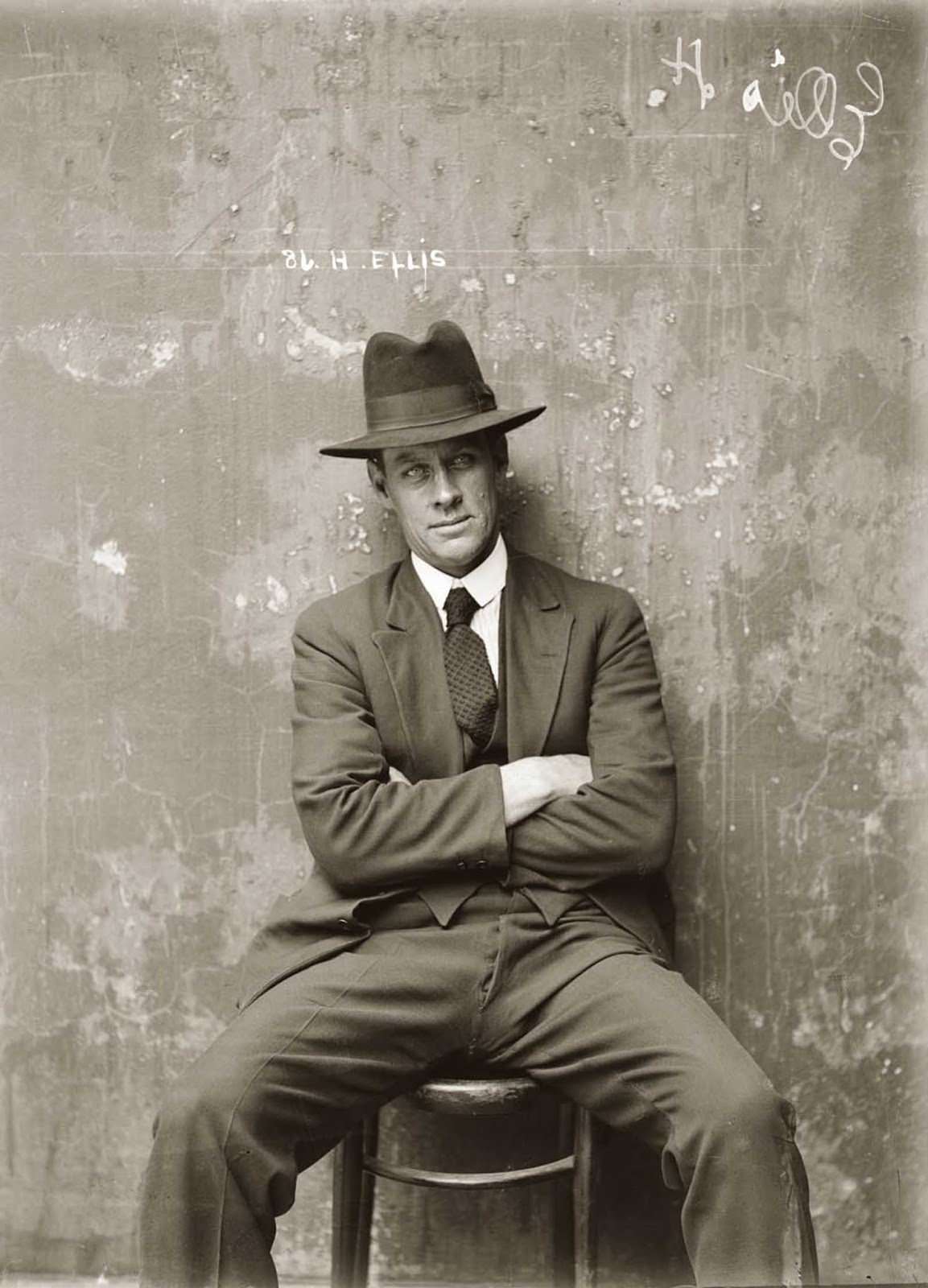
The precise circumstances surrounding this picture are unknown, but Ellis is found in numerous police records of the 1910s, 20s and 30s. He is variously listed as a housebreaker, a shop breaker, a safe breaker, a receiver and a suspected person. A considerably less self-assured Ellis appears in the NSW Criminal Register of 29 August 1934 (No. 206). His convictions by then include ‘goods in custody, indecent language, stealing, receiving and throwing a missile.


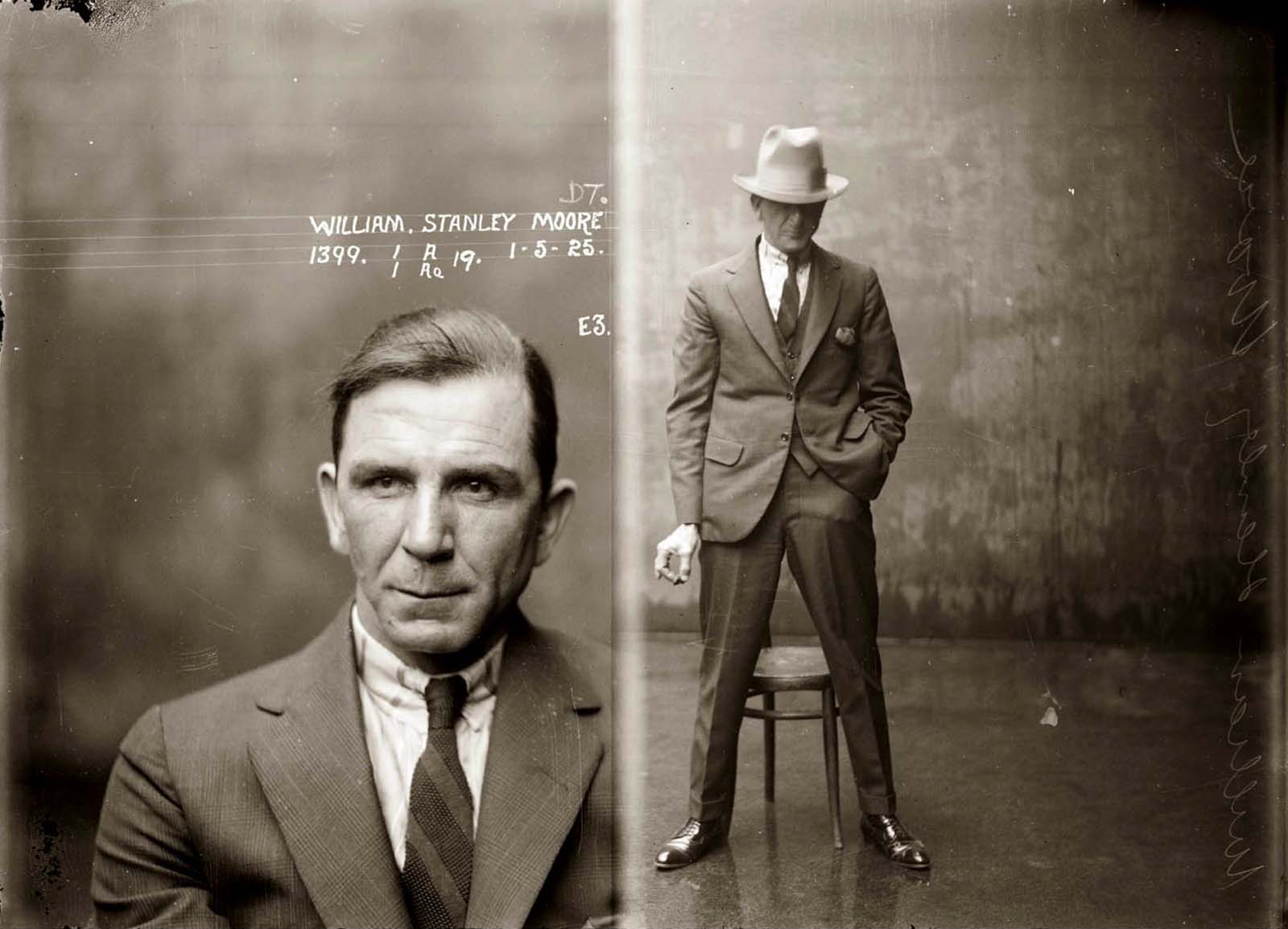
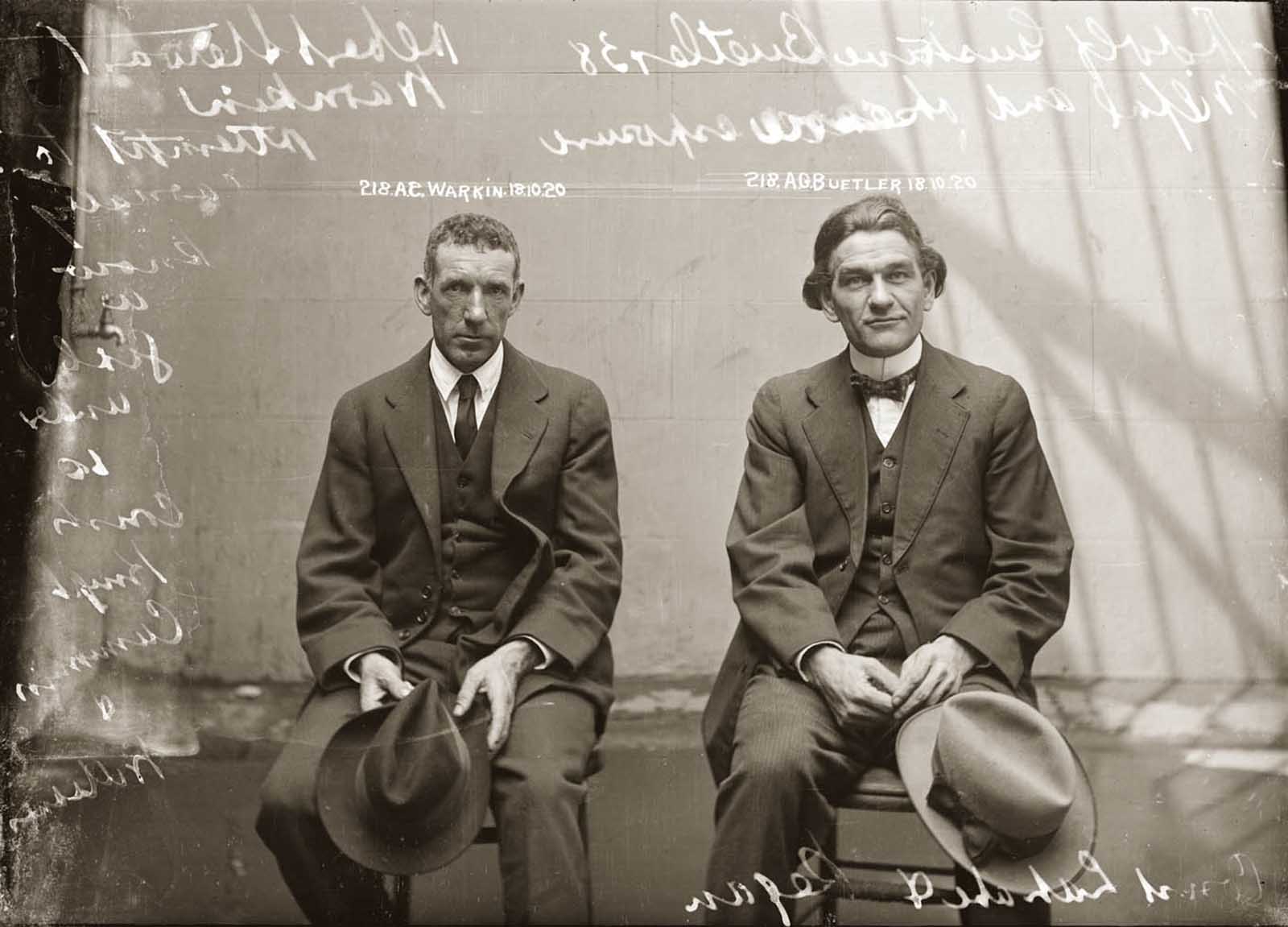
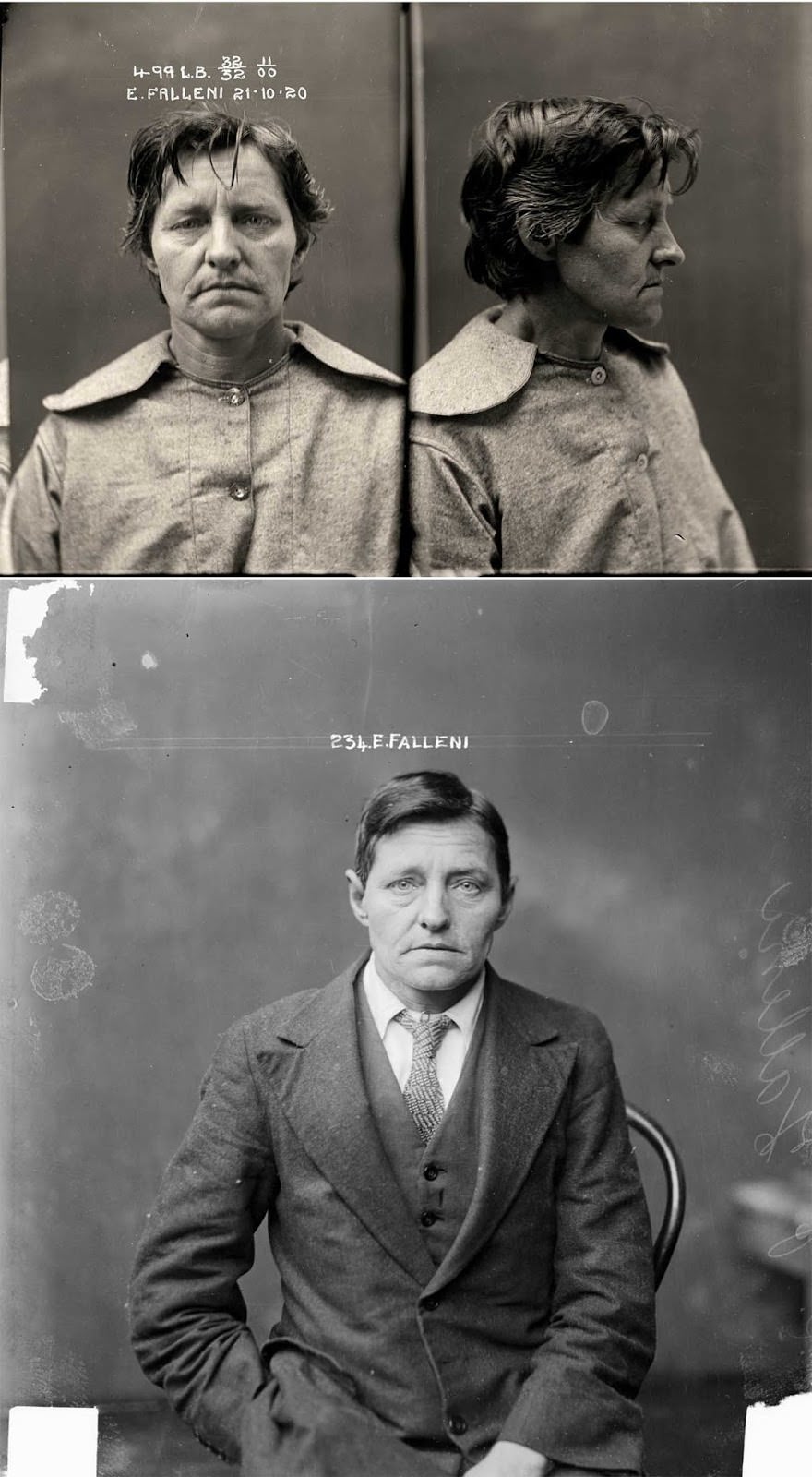
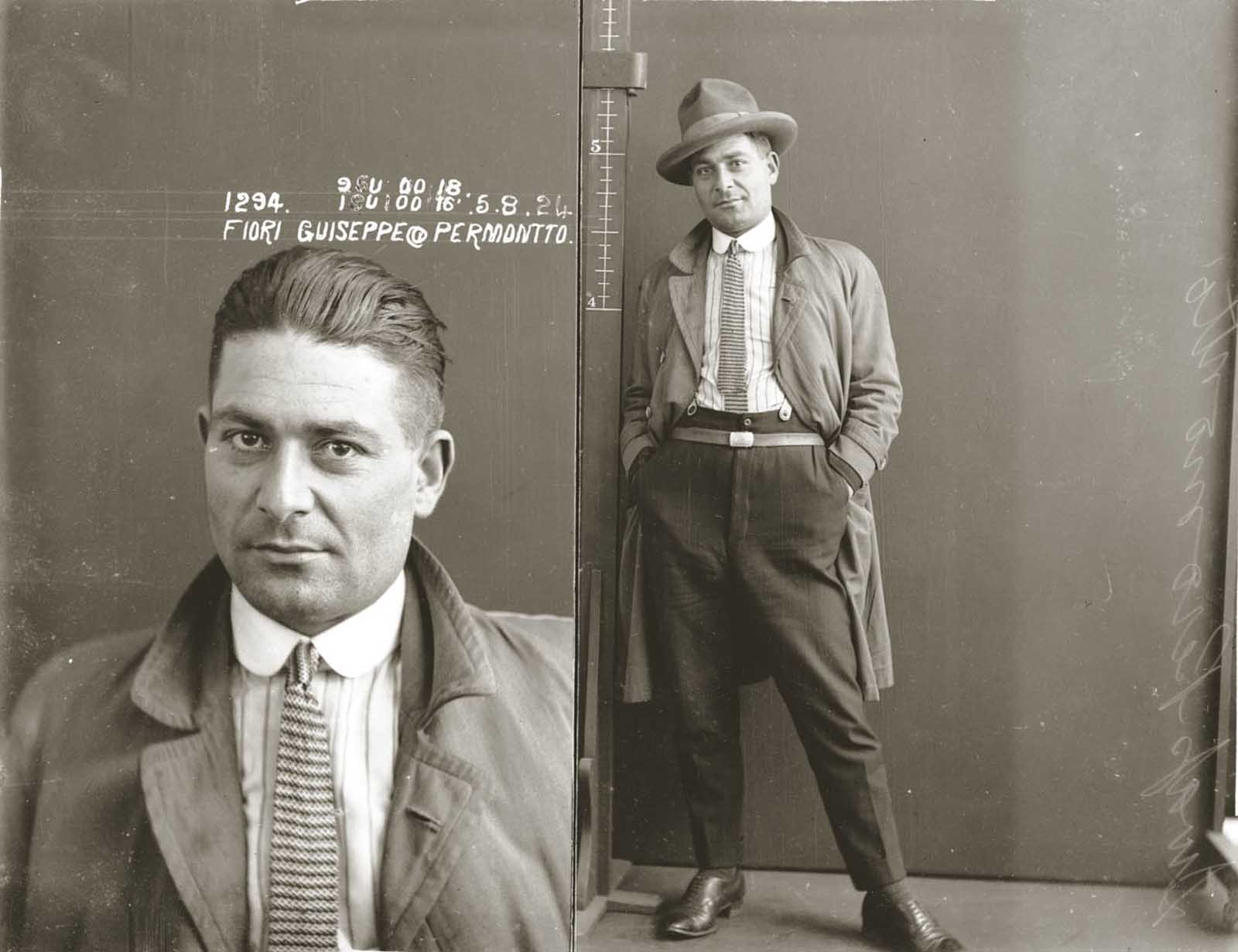
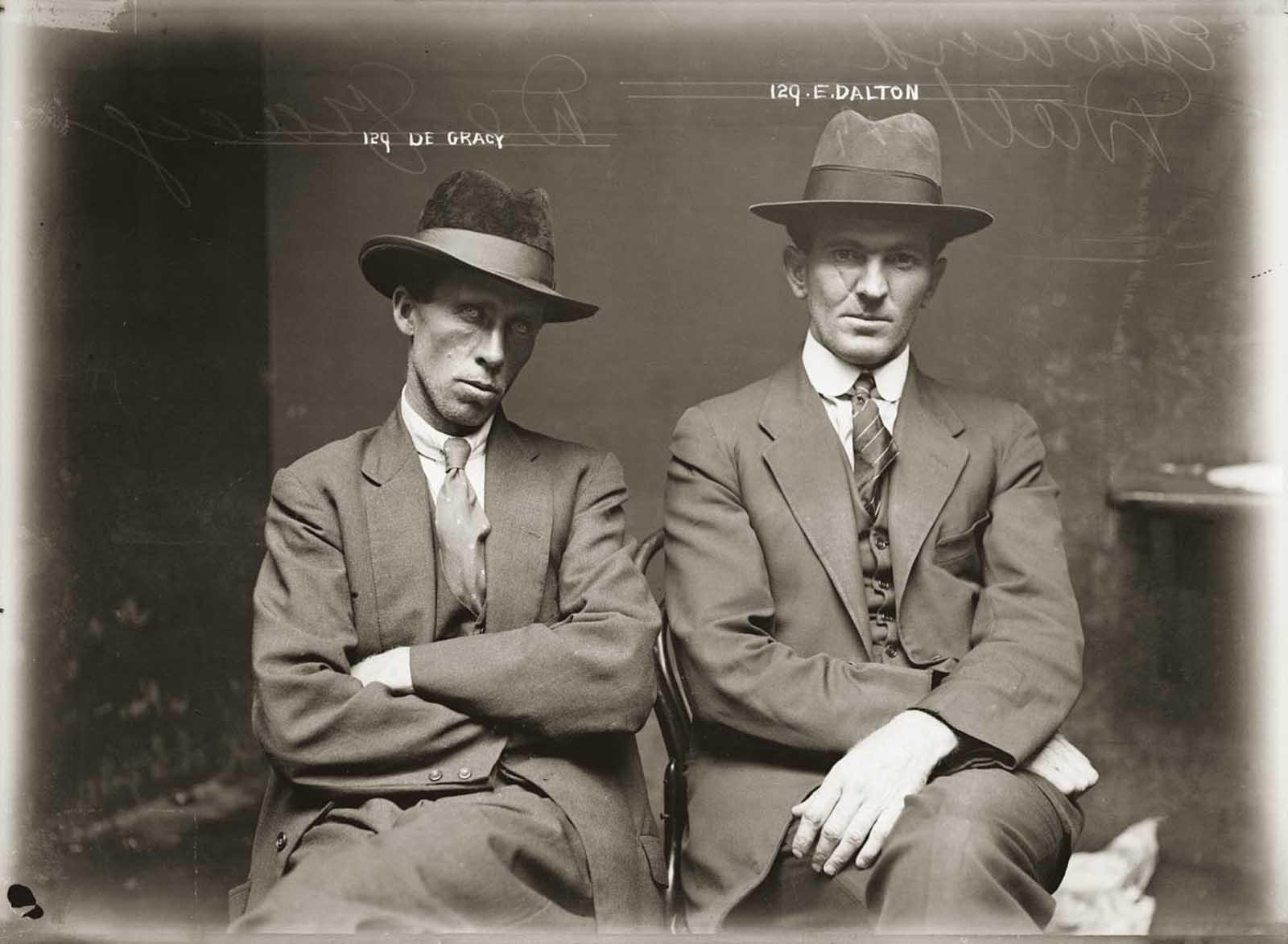
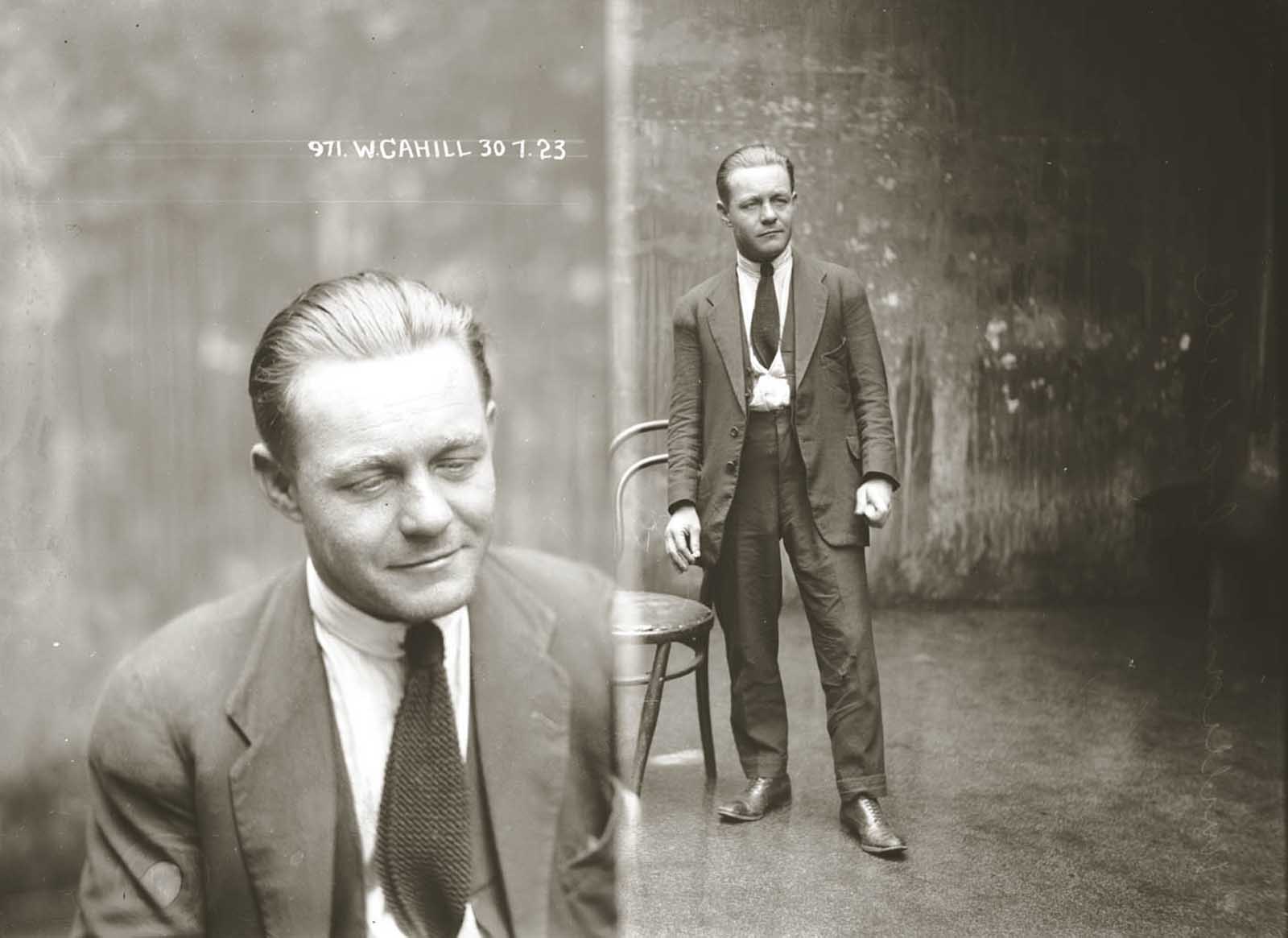
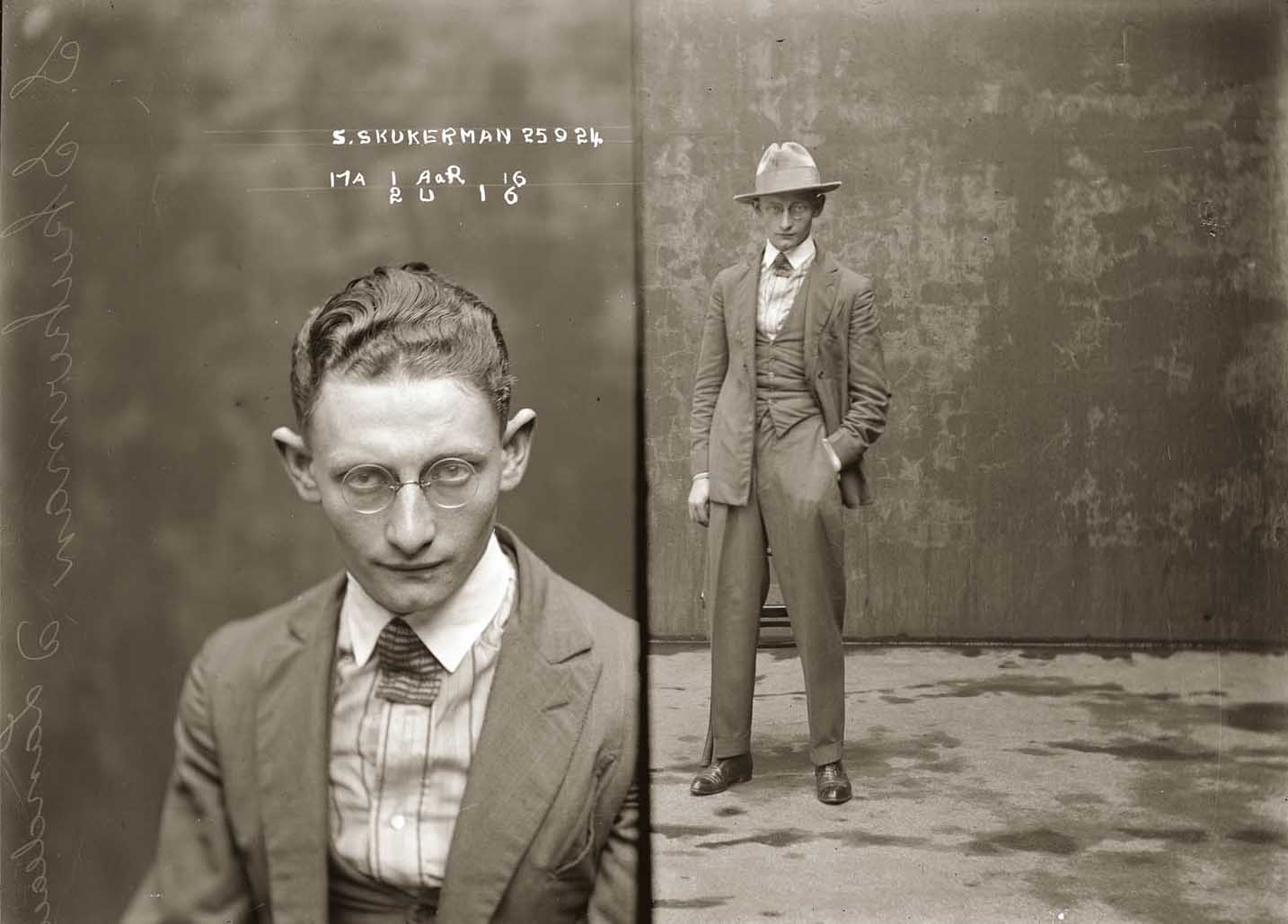
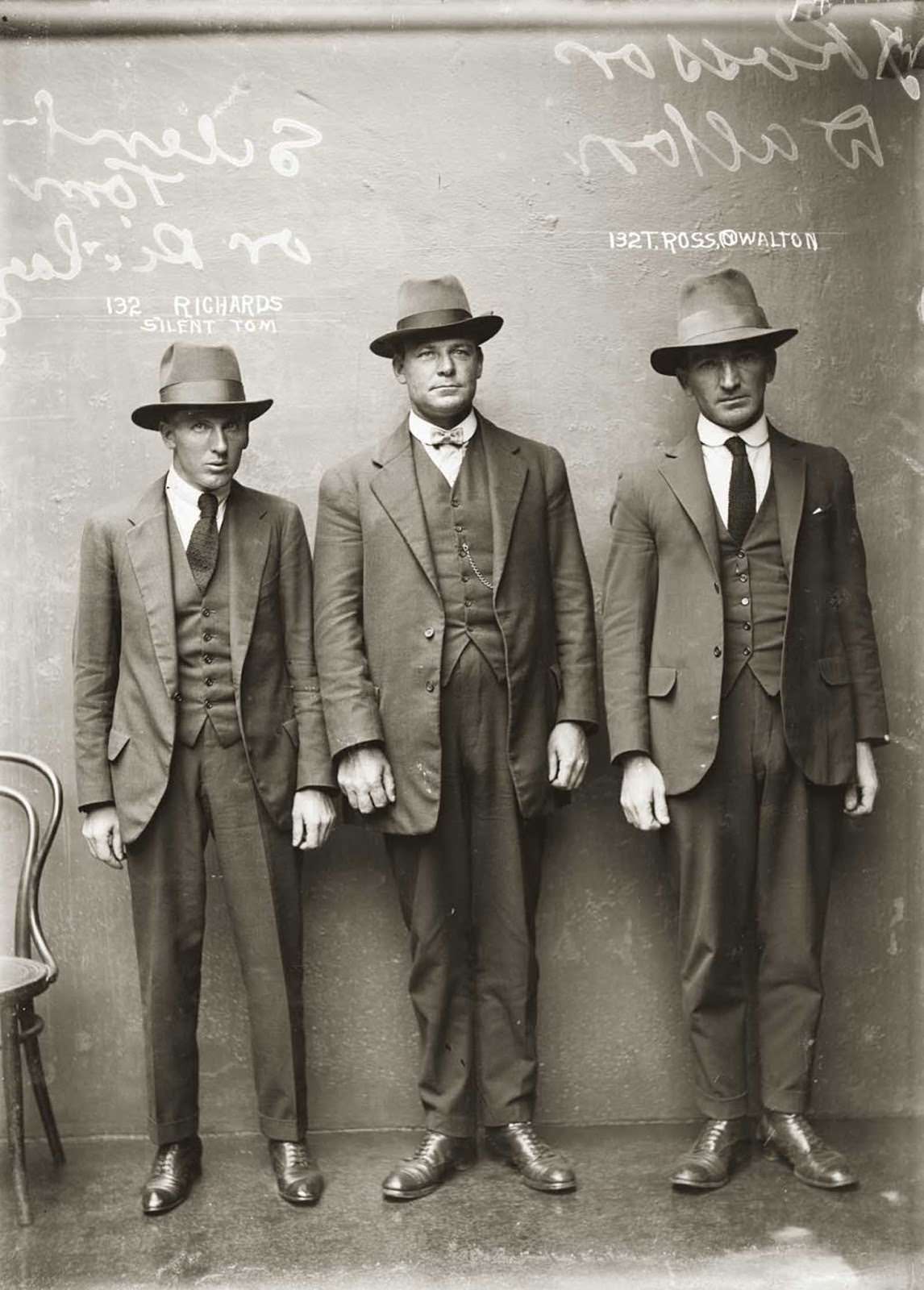
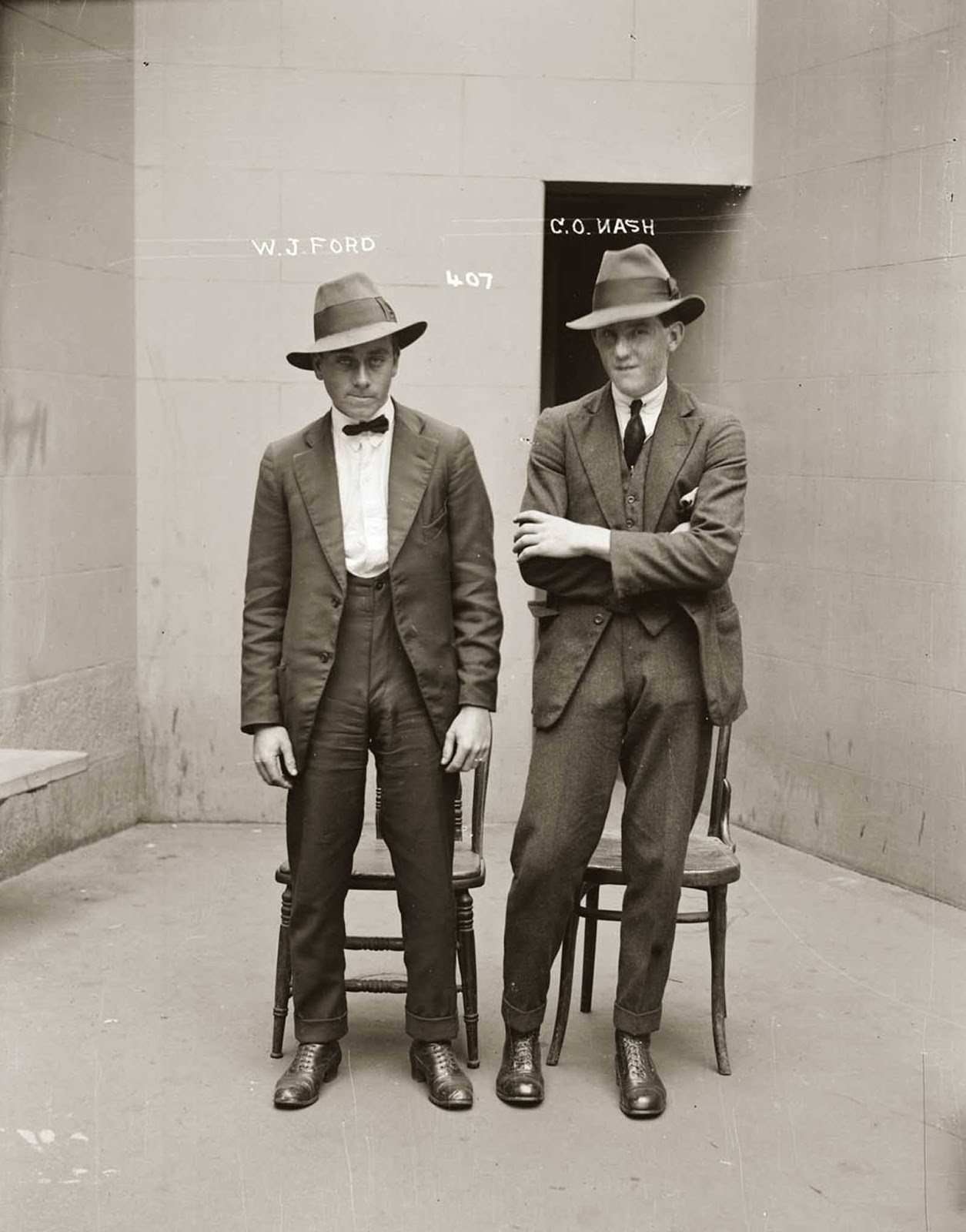
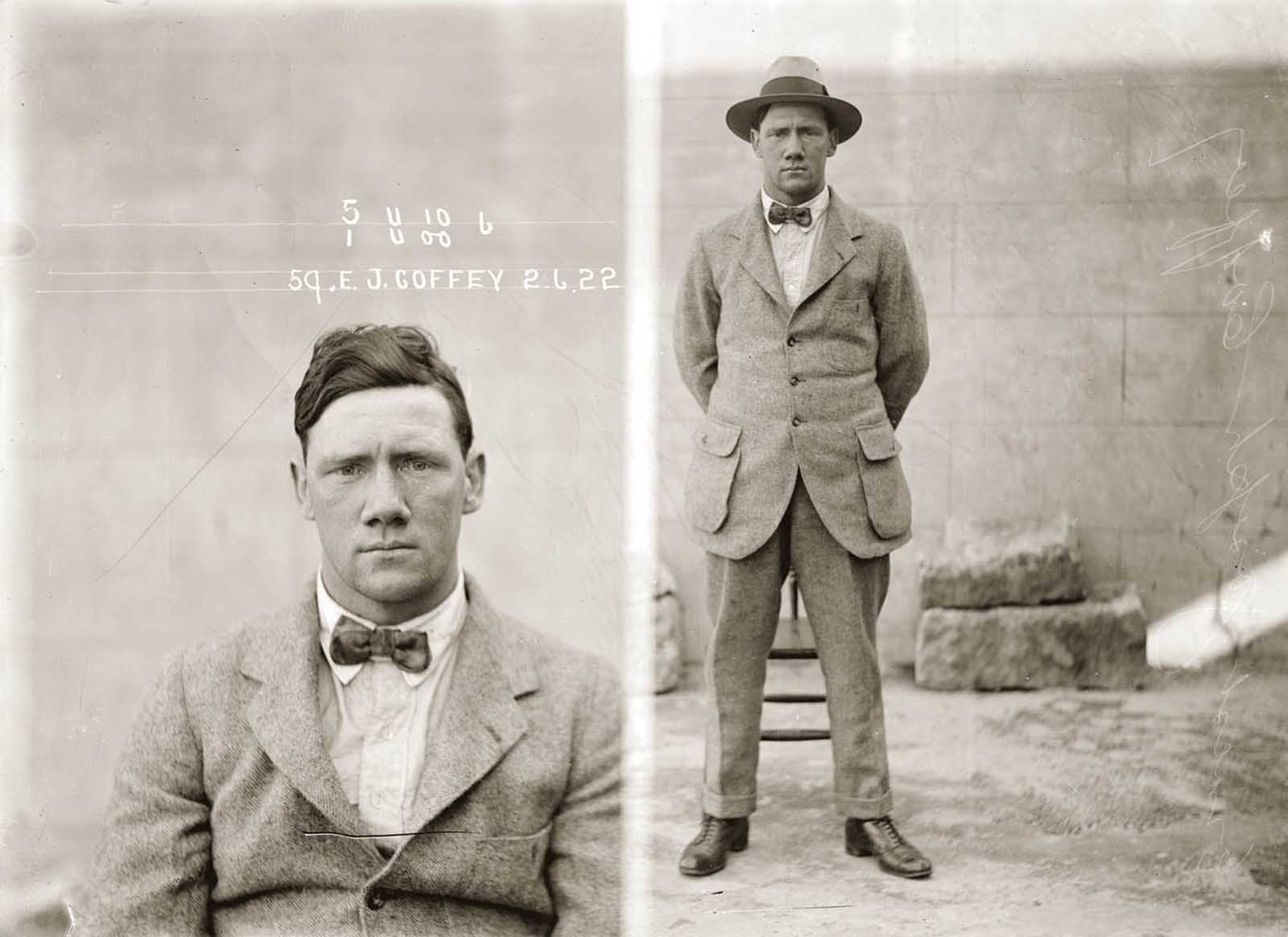
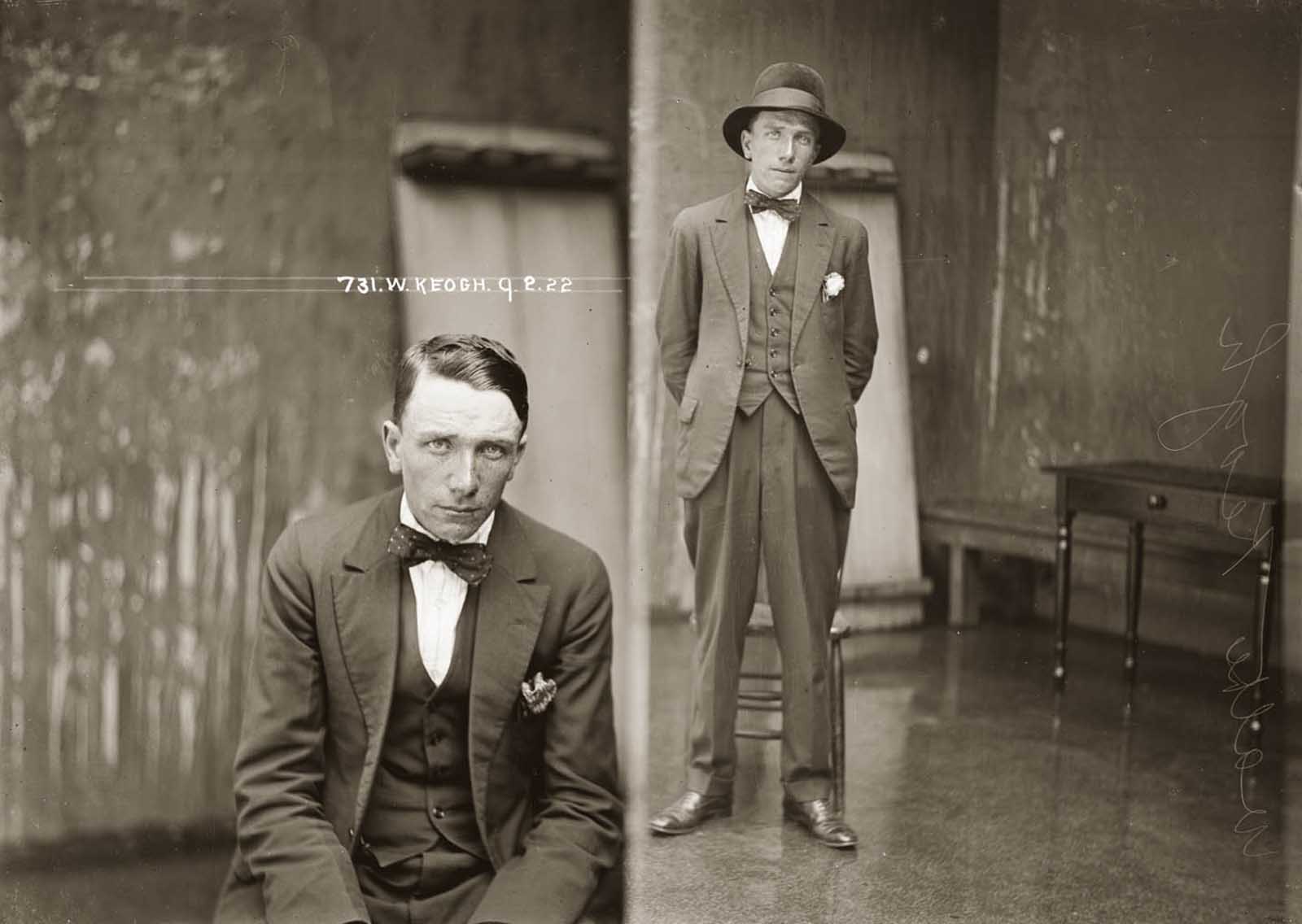
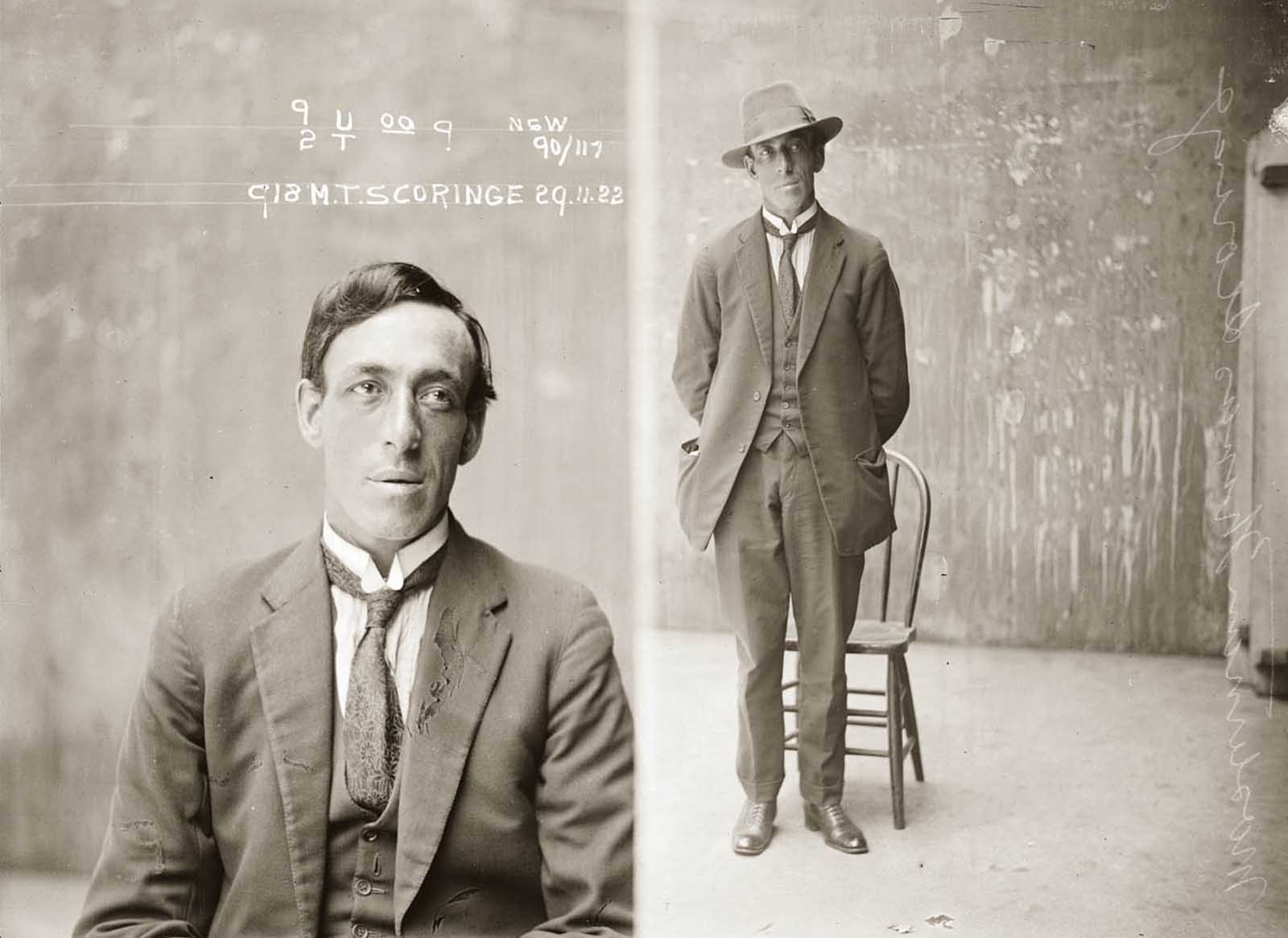
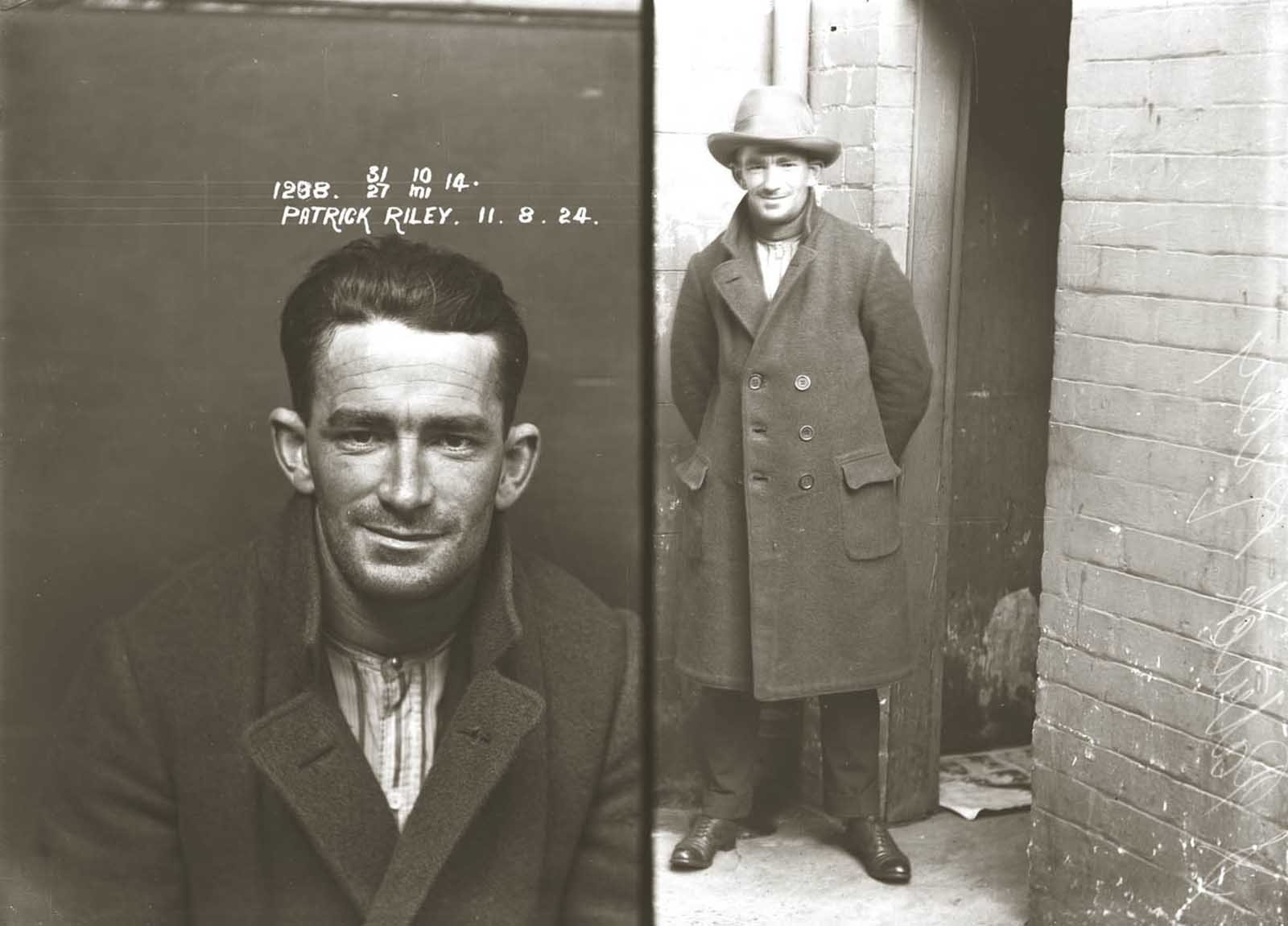
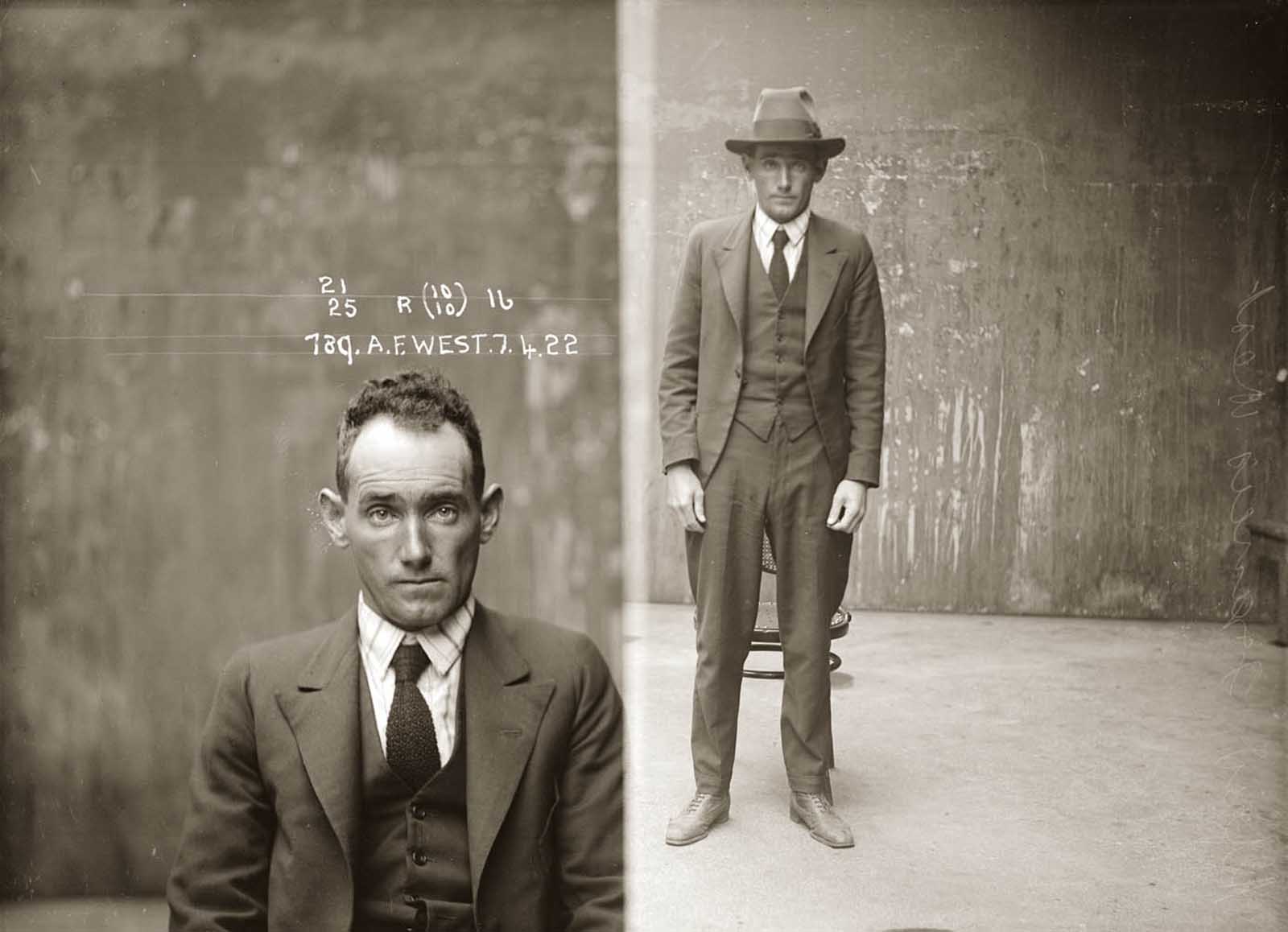
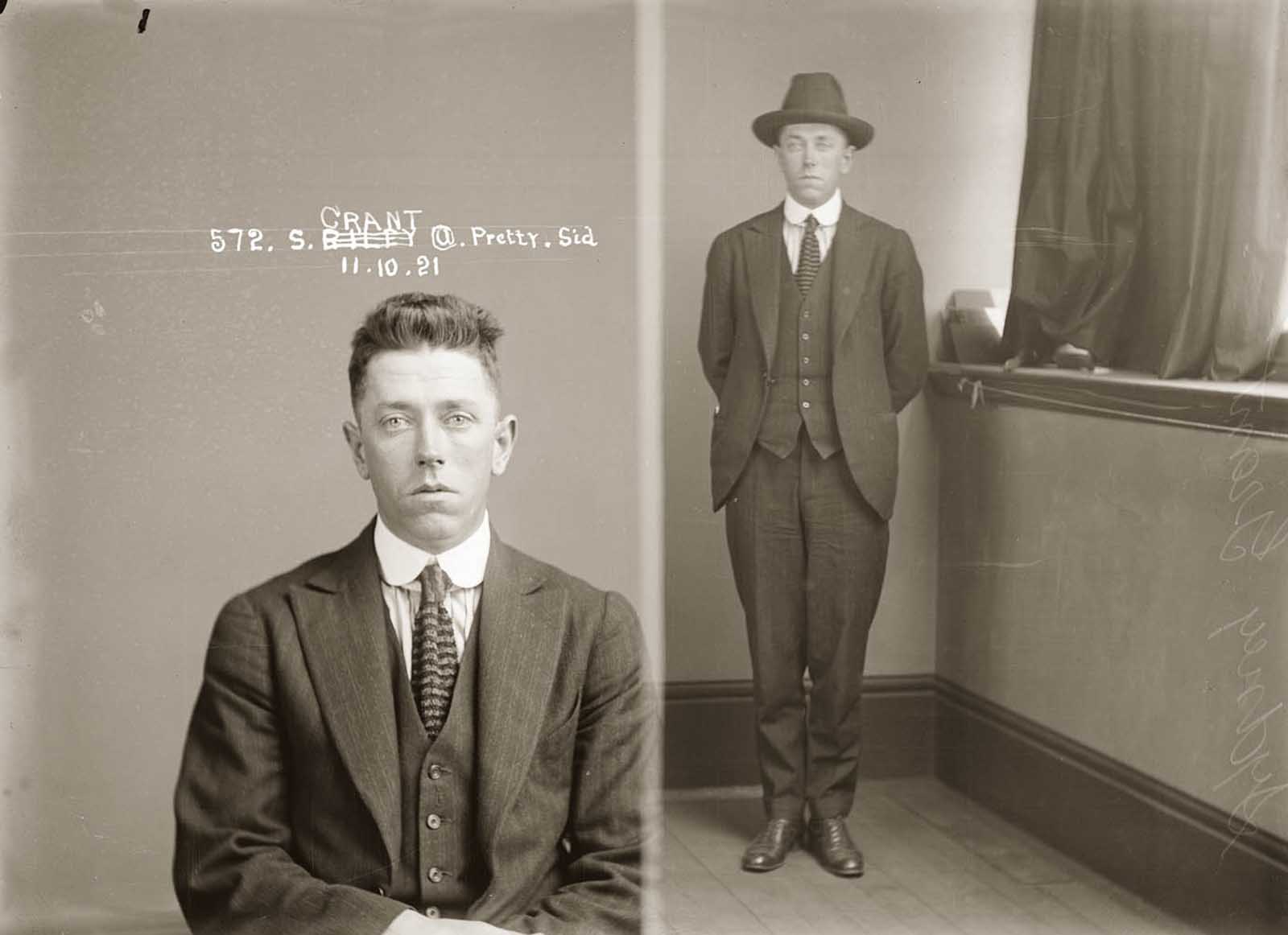
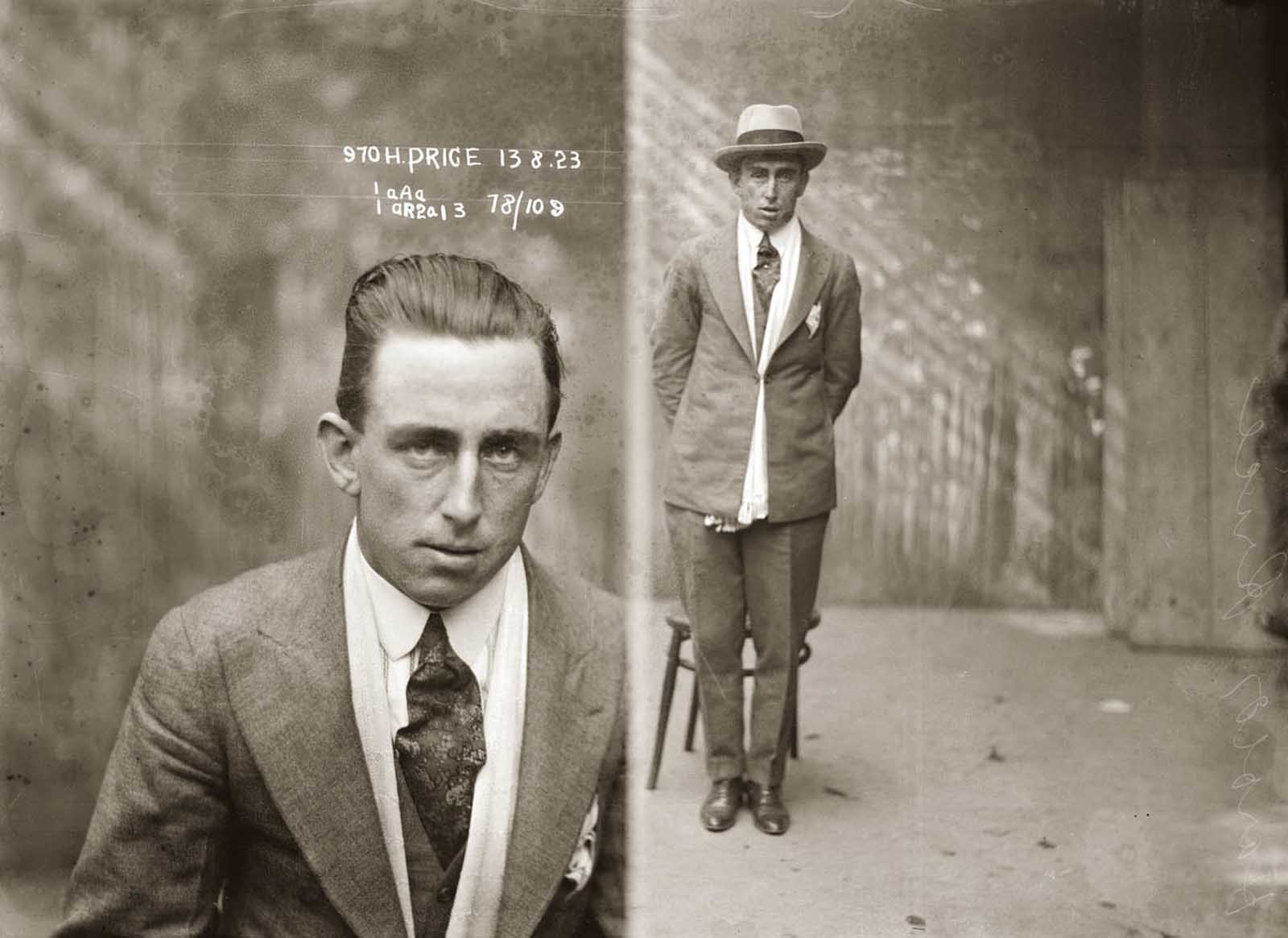
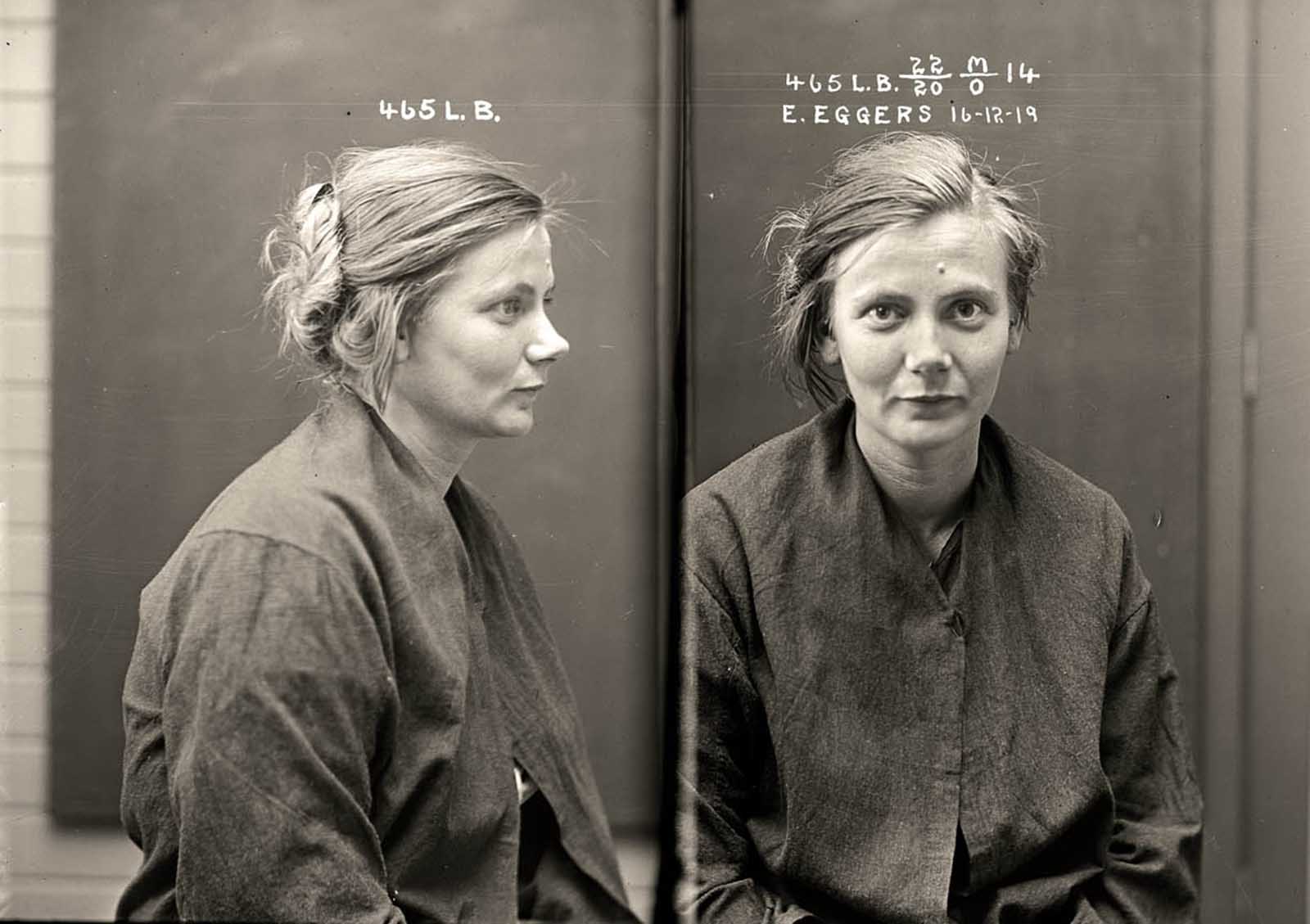
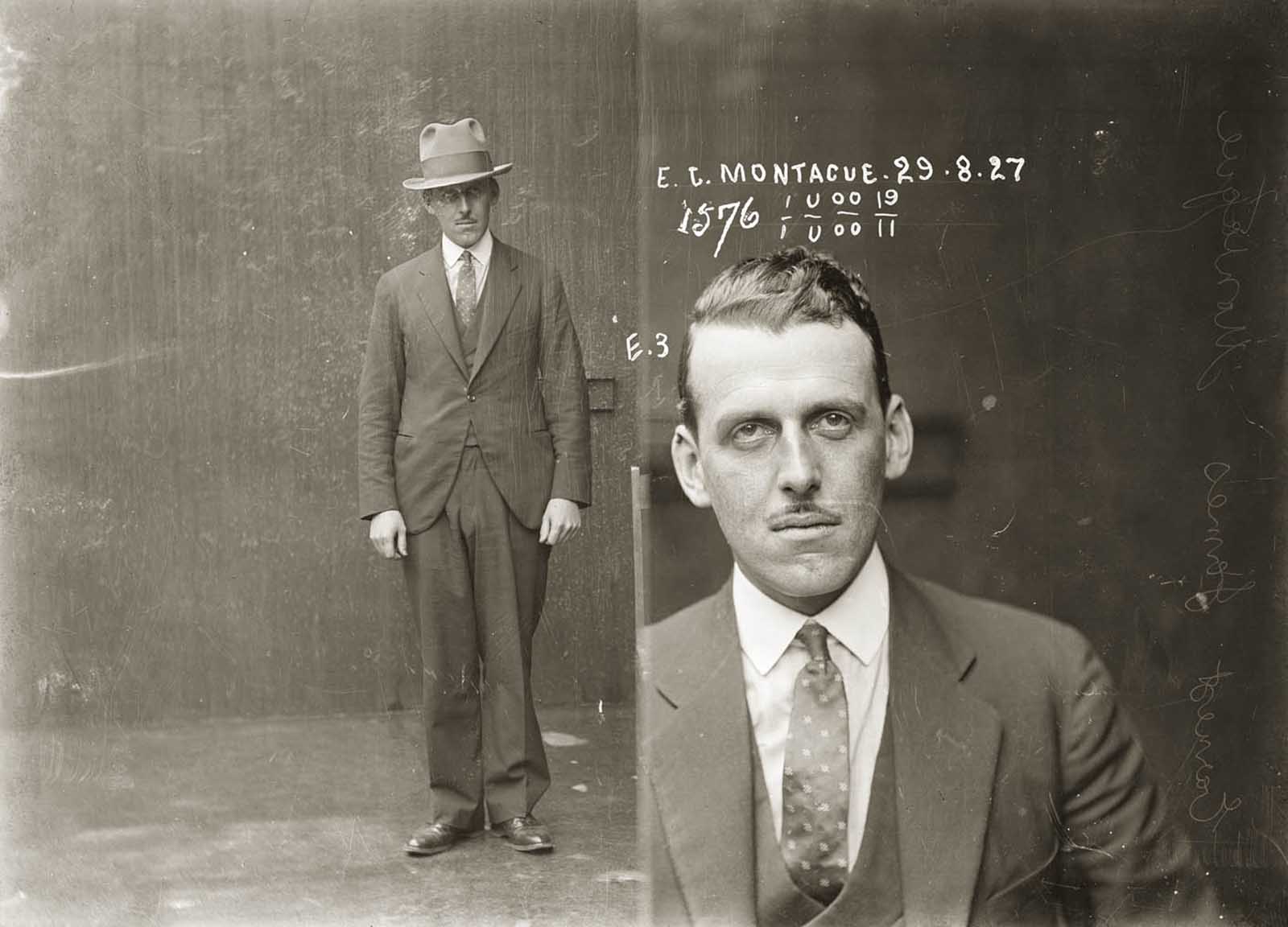

Their pants are similar to modern cuts
Some pretty snappy dressers.
Every single one of the men here dresses significantly better than I do
Back then, clothing wasn’t as “disposable” today. The few items of clothing you owned had to be both rugged and fashionable.
I can almost smell musty mothballs
These pics made me think of a fitting title for a book or play, “Crimson Suits”. A play on words and crimes.